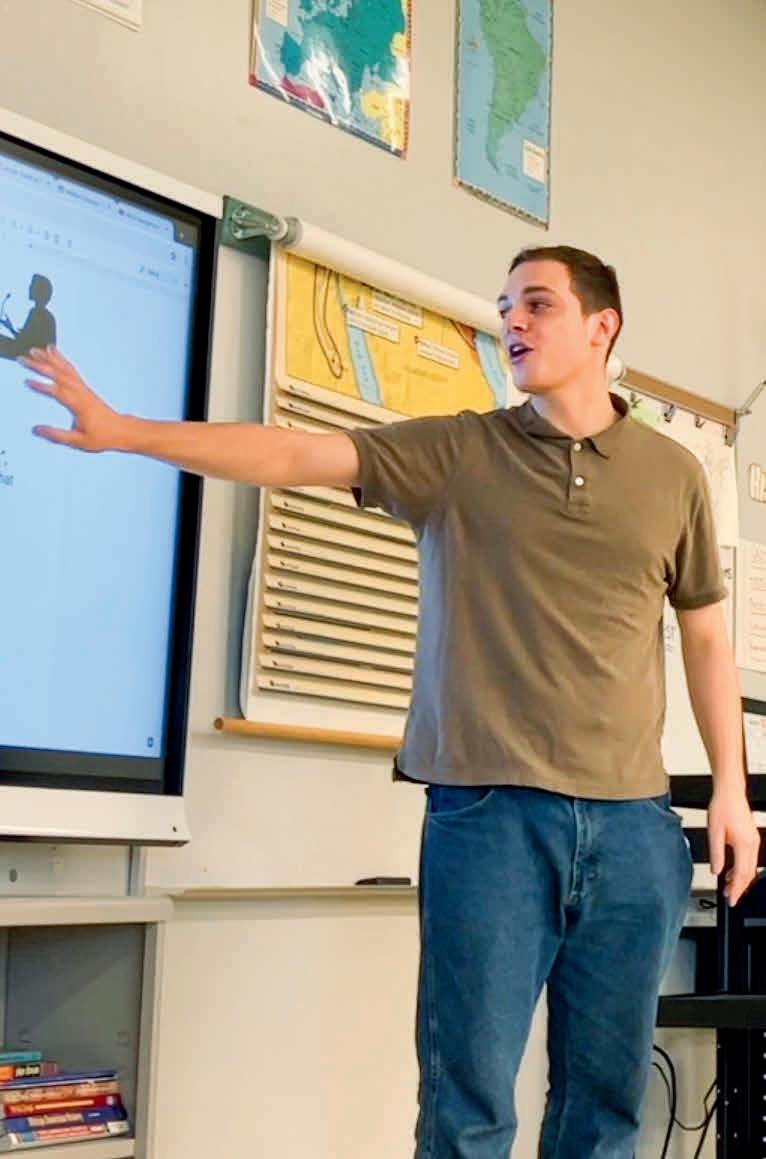

CONTENTS

6
On The Road
Robert Asante, GRD’19, built a road to connect children in his Ghanaian village to their education.
The Future of Admissions
Penn GSE alumni and faculty experts look ahead, past the coming “demographic cliff,” at the challenges and opportunities in the field.
19
Educating in the Biggest Classroom
They work outside of traditional school settings, but the Penn GSE alumni who work in educational media—from public television to podcasts—are still teaching.
A Worldwide Web
23 cover story
Penn GSE professors and programs are engaged in more than 150 international partnerships and projects in more than 60 countries. The goal? To change the world through education.
"What's
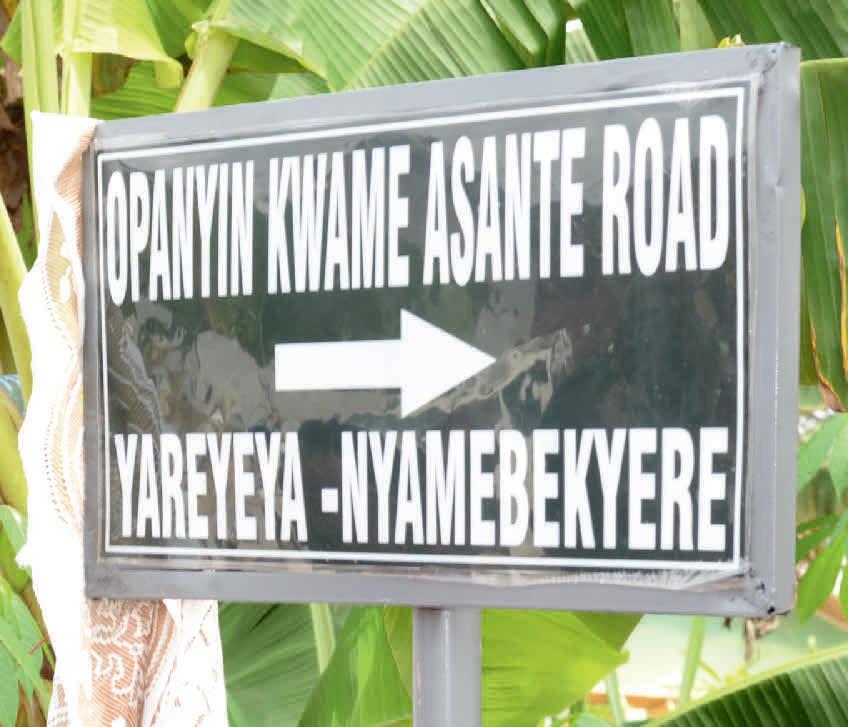


Letter from the Dean
The past few weeks on campus have been filled with the joyful traditions that mark the close of every academic year: students crossing the stage at Commencement and graduates returning to reconnect over Alumni Weekend. It is a time of celebration, of honoring accomplishments—a time of looking back and looking forward. These moments remind us what education makes possible: growth, discovery, and hope for the future.
And yet, this season of joy arrives amid profound disruption. Across the country and around the world, educators and learners are facing extraordinary pressures. Shifting political winds, heightened scrutiny of schools and universities, and shrinking support for critical social services have left many of you carrying more than your share. I have heard from alumni who are concerned about funding, burnout, academic freedom, and the safety and wellbeing of their students and colleagues.
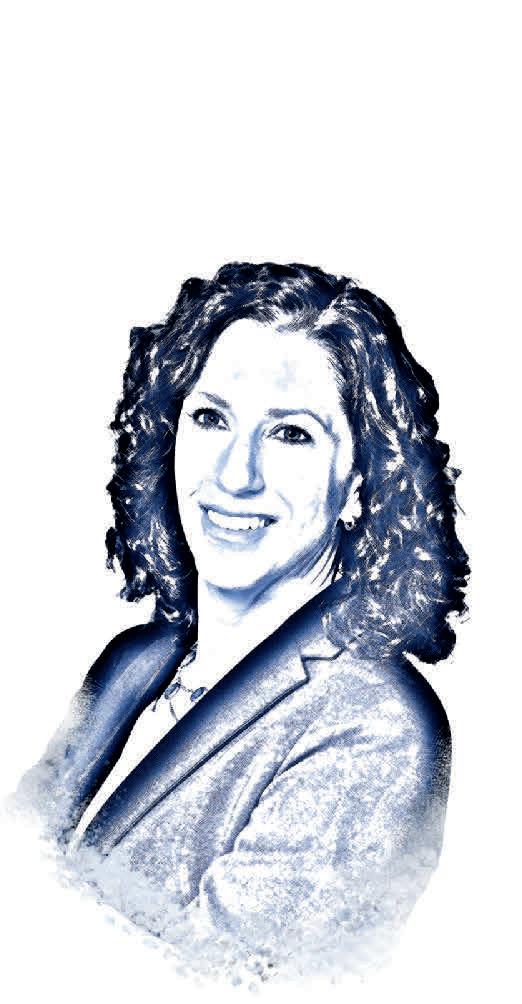
In complex times, we are called back to our convictions. At Penn GSE, we hold fast to a simple one: education is the bedrock of a just and thriving society. It uplifts individuals. It empowers communities. And by preparing learners for engaged participation in civic life, it sustains democracy itself.
So, our work must continue. Penn GSE is redoubling our investments in the people and partnerships that shape education for the better. Our faculty are producing fielddefining research that speaks directly to the great challenges of our time in areas like student mental health, teacher retention, school finance, higher education leadership, and more. Our students are entering the field ready to lead, grounded in rigorous preparation and real-world experience. And our alumni are advancing change every day in classrooms, districts, universities, nonprofits, edtech ventures, and other vital spaces for learning. The reach of this work is extraordinary.
You bring Penn GSE’s mission to life every day, and we want to be there for you. If you are navigating disruption, please reach out. What resources or opportunities would be most meaningful? Please let us know at alumni@gse.upenn.edu. I am deeply grateful for your partnership, and I know that, together, we can sustain our shared purpose in this turbulent time.
All best,
Dean, Penn Graduate School of Education
George and Diane Weiss Professor of Education
GRADUATE SCHOOL OF EDUCATION
UNIVERSITY OF PENNSYLVANIA
The Penn GSE Magazine is produced by the University of Pennsylvania Graduate School of Education, 3700 Walnut Street, Philadelphia, PA 19104. Reproduction of these articles requires written permission from Penn GSE. ©2025 by the Trustees of the University of Pennsylvania. Please contact Penn GSE at (215) 573-6623 or alumni@gse.upenn.edu for references or to update your address.
Katharine Strunk Dean
William Parker Vice Dean, Marketing and Communications
Rebecca Raber
Editor
Editorial Board:
Jane L. Lindahl, GED’18
Jennifer Moore
Jyoti Poonia, GED’25
Kat Stein
Designed by Bold Type Creative Copyedited by Colleen Heavens
Board of Advisors
Jeffrey S. McKibben, W’93, Chair
Deborah L. Ancona, C’76, GED’77
Olumoroti G. Balogun, GED’19, GRD’20
Brett H. Barth, W’93
Allison J. Blitzer, C’91
Harlan B. Cherniak, W’01
Jolley Bruce Christman, GED’71, GR’87
Webster B. Chua, W’04
Samara E. Cohen, C’93, W’93
Beth S. Ertel, W’88, WG’92
Evan S. Feinberg, W’09
Jeffrey L. Goldberg, W’83, WG’89
Patricia Grant, GED’01, GRD’04
John A. Henry
Alexander B. Hurst, C’01
Heather Ibrahim-Leathers, W’95
Andrew H. Jacobson, WG’93
Douglas R. Korn, W’84
R. Neil Malik, ENG’92, W’93
Gregory A. Milken, C’95
Andrea J. Pollack, C’83, L’87, GED’17
David N. Roberts, W’84
Francisco J. Rodriguez, W’93
Molly P. Rouse-Terlevich, C’90, GED’00
Michael J. Sorrell, GRD’15
Navin M. Valrani, W’93, GED’18, GED’22, GRD’23
Steven M. Wagshal, W’94

Editor’s note: This issue of Penn GSE Magazine went to print on May 30, 2025.
Pursuing Institutional Purpose: Profiles of Excellence
By Matthew Hartley and Alan Ruby
Published February 2025
Cambridge University Press
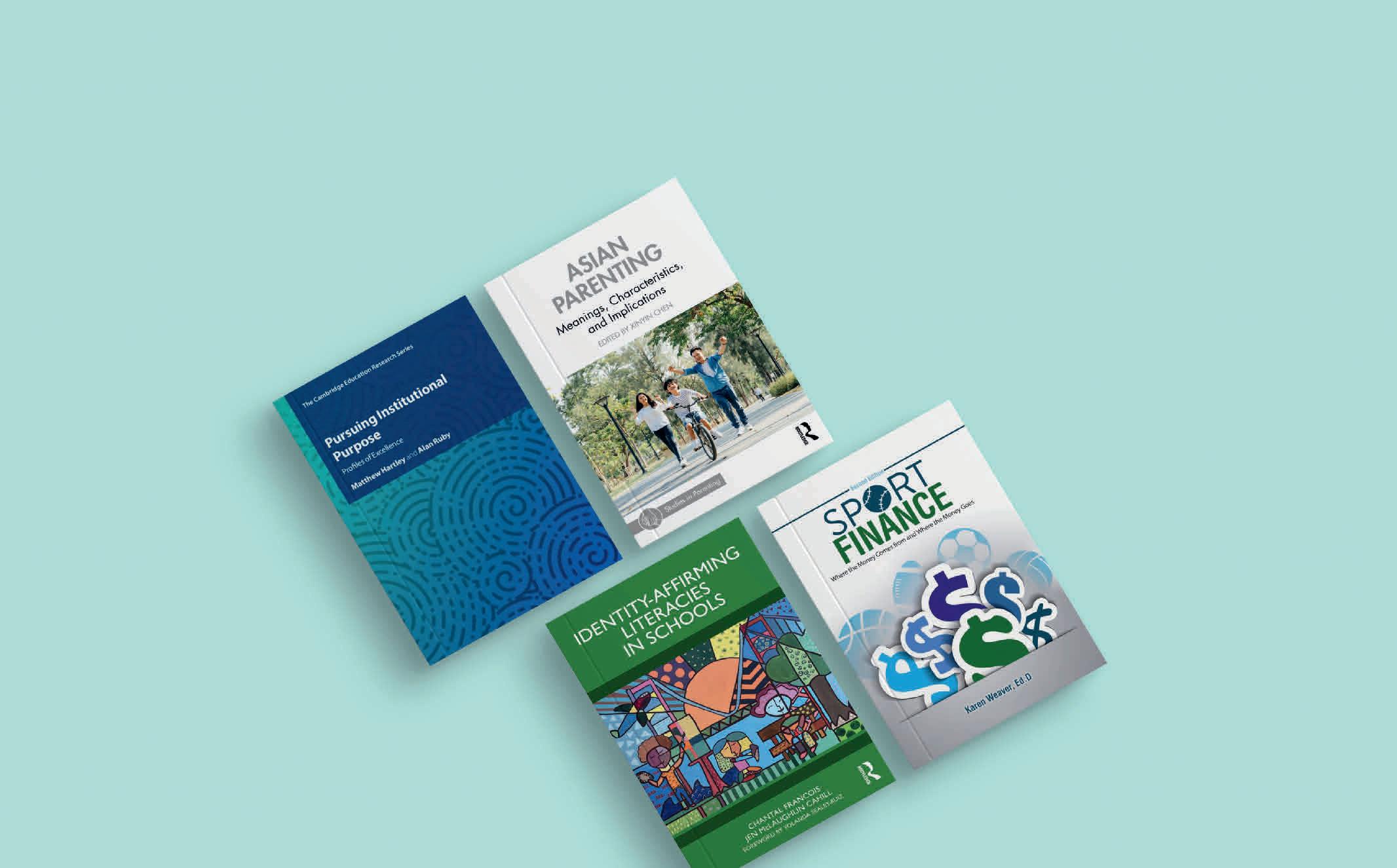
FACULTY BOOKSHELF
Asian Parenting: Meanings, Characteristics, and Implications
Edited by Xinyin Chen
Published March 2025 Routledge
Sport Finance: Where the Money Comes From, and Where the Money Goes (Second Edition)
By Karen Weaver
Published January 2025
Kendall Hunt Publishing
Identity-Affirming Literacies in School
By Chantal Francois and Jen McLaughlin Cahill
Published February 2025 Routledge
NEWS & AWARDS
Ross Aikins (1) presented at the Comparative and International Education Society conference on the research he has been conducting with current Penn GSE students and alumni on evolving student AI use in higher education. This grant-funded project with Peter Eckel (2) represents Penn GSE’s participation as one of seven global university partners of the Institute of International Education’s Global AI in Higher Education Collaborative supported by the World Innovation Summit for Education (WISE), the Qatar Foundation’s global initiative for education.
Sigal Ben-Porath (3) was elected to the National Academy of Education, recognizing the excellence of her scholarship and leadership in the field. It is one of the highest honors in education.
María Cioè-Peña (4) received the Research Improving the Educational Access, Experiences, and Outcomes of BIPOC Students with Disabilities Award from the Council for Exceptional Children, the largest international special education professional organization.
Ameena Ghaffar-Kucher (5) has published the results of her fouryear national study, funded by the Spencer Foundation, on the website “Unequal Citizens: Documenting the Civic Lives of American Youth from Muslim Immigrant Communities.” The site illustrates how American youth from Muslim immigrant communities narrate and understand their experiences in relation to the historic and contemporary conditions that shape Muslim life in the US.
Michael Golden (6) and Wendy Chan (7) earned an Education Innovation and Research program early-phase grant from the Department of Education for their project, “Helping Educator Resilience and
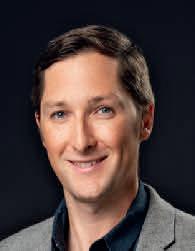
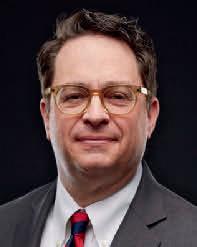
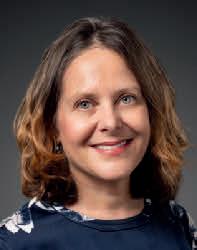
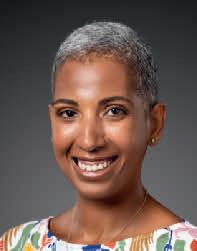
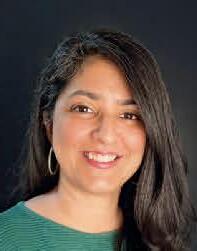
Optimism: Workforce Strategy for Wellbeing and Retention (Project HERO),” which targets the need for an accessible, readily scalable, and researchinformed workforce strategy that supports school leaders to develop, implement, and monitor the success of organizational approaches for improving teacher and staff resilience and retention. Golden also received the 2025 PA Educational Technology Expo and Conference Meritorious Award for his dedication and commitment to the field of educational technology.
Pam Grossman (8) and Penn GSE postdoctoral scholar Maya Kaul, GR'24, earned a new grant from the Spencer Foundation to investigate how states are creating differentiated roles for teachers in their project, “Chutes or Ladders: Surveying State Policy Approaches to Transforming K–12 Teacher Roles.”
Yasmin Kafai (9) is one of the winners of the 2025 Stibitz-Wilson Awards, given by the American Computer and Robotics Museum. She will be honored at an event on September 26 in Bozeman, Montana.
Sarah Schneider Kavanagh (10) was awarded a grant from the Spencer Foundation for her project, “Collaborating Towards Transformational Visions for Digital School Systems,” which aims to surface descriptions of the current state of how data systems shape students’ and families’ relationships to schooling.
Sharon Wolf (11) was awarded a grant from the Spencer Foundation for her project, “Assessing Medium-term Impacts of Montessori-Preschool Spaces in Rural Northern Nigeria,” a research-practice partnership with the Centre for Girls Education that evaluates the medium-term impacts of the Ci Gaba Preschool Safe Space Program.
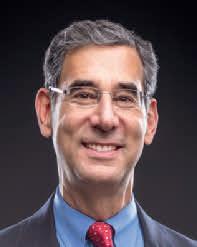
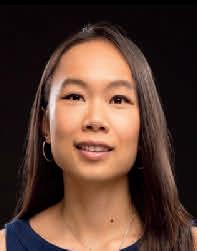
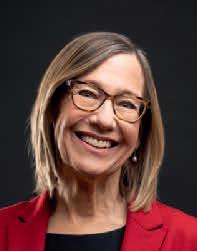
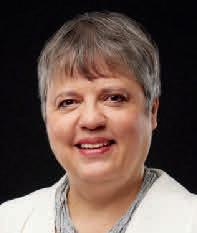
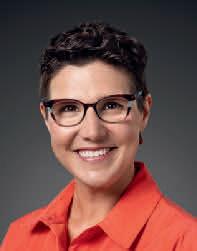
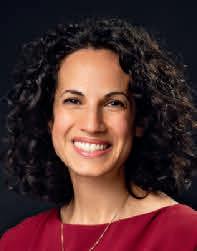
NEWS BRIEFS
Reimagining Representation: The SIMBY Story
Kyra Williams’ nonprofit, SIMBY—Stories In My Backyard—began with a simple question: “What if I had access to media arts education sooner?” For Williams, a Philadelphian who just finished her first year of Penn GSE’s Teaching, Learning, and Teacher Education doctoral program, the question is rooted in her experience navigating her undergraduate experience at New York University (NYU) Tisch’s Clive Davis Institute of Recorded Music.
Williams started SIMBY as part of her undergraduate capstone, after noticing that her NYU classmates from affluent backgrounds came to school with significant technical expertise in recording and production equipment that she didn’t have. SIMBY teaches those skills and more—culturally relevant media arts education for Black youth, the kind Williams wished she’d had before she headed off to college.
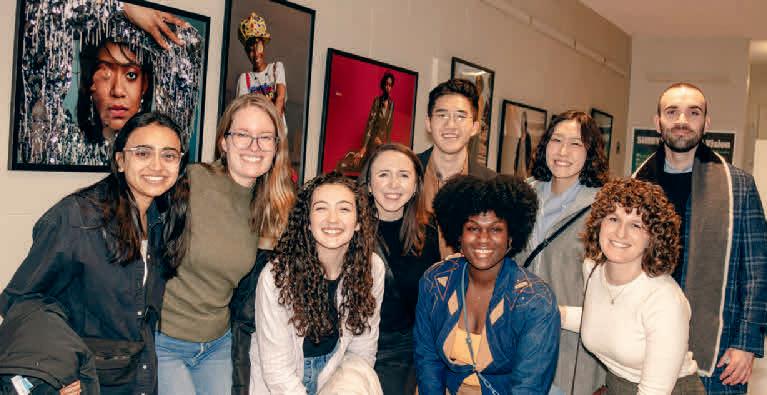
The nonprofit’s latest project is an exhibit, The Voices of Sisterly Affection, that honors the legacies of nine Black women musical artists from Philadelphia— Billie Holiday, Patti LaBelle, Phyllis Hyman, Lisa “Left Eye” Lopes, Eve, Jill Scott, DJ Diamond Kuts, Jazmine Sullivan, and Tierra Whack—by blending photography and community storytelling. What began as pandemic-era photoshoots evolved into an immersive exhibit with a virtual reality component that was on view for six months this winter and spring at the Free Library of Philadelphia. “Black women have felt seen, less alone, and even cried while viewing this exhibit,” Williams said. “I’ve seen first-hand that being an artist is revolutionary through this work.”
Williams was named a Black Music City grantee by REC Philly, WXPN, WRTI, and the William Penn Foundation in 2021 and again in 2024, which helped fund the exhibit. Her work is inspired by her hometown—the exhibit takes its name from Philly’s expanded motto, the City of Brotherly Love and Sisterly Affection—and her goal is to continue to nurture the next generation of local Black storytellers. “There’s no better time than now to amplify their voices— and no better place than home,” she said.
At the exhibit’s opening reception in February, Williams was moved to see so many of her Penn GSE professors and classmates in attendance. “The support of this community has been so genuine and game-changing for me,” she said. “I feel so welcomed and embraced for my unique approach to my doctorate as a multimedia artist and social entrepreneur!” For more: penng.se/simby
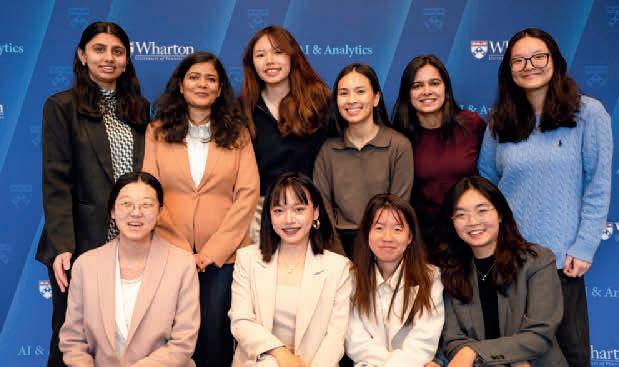
Penn GSE Teams Finish Strong at Wharton Hack-AI-thon
Two teams of Penn GSE master’s students made it to the finals of the second annual Wharton HackAI-thon, which brought together students from across the University to innovate with artificial intelligence for one week in March.
One team—featuring Learning Sciences and Technologies (LST) students Jyoti Poonia, Catherine Roeroe, Sakshi Singh, and Amanda Tran, along with Teaching, Learning, and Leadership student Ruchi Arora—developed Agora, an AI-powered classroom orchestration tool designed to foster intentional, meaningful dialogue. The other—featuring LST students Siyun Chen, Xinyue Cui, Haowei Li, and Shiyang Zhang, plus Penn Engineering student Sen Liu—created Echolearn, a personalized AI companion that helps users deepen their understanding of any study material by prompting them to explain and teach it.
“My learning from this experience has been truly incredible,” said Arora. “One of the most powerful aspects was witnessing how each team member— regardless of background—contributed meaningfully. . . . We worked on a real-world challenge, which made the experience even more impactful. It encouraged us to think strategically—not only about the problem at hand, but also about how education might evolve in the future.”
Of the roughly 40 teams competing, the Agora team was one of six finalists in the AI for Education Challenge, and Echolearn was one of two finalists from a field of 15 in the Prompt Hacking Challenge. The finals were judged by Wharton Lecturer and nine dots CEO Geoffrey Klein, GEP Worldwide President and Co-founder Neha Shah, C’99, W’99, WG’06, Glymer CEO Jeff Greenhouse, W’99, and former partner at KPMG Brian Hughes, W’81, WG’91.
“I saw this as a great opportunity to learn from the judges,” said Chen. “Their feedback helped broaden and deepen my understanding of what it really takes to create an effective AI-based learning solution—both in terms of educational theory and practical value.”
“The most significant takeaway for me from this experience was how we translated classroom theory into a real-world, AI-driven application,” said Poonia. “I’ve been working on AI-related projects across classes this semester, and it was incredibly meaningful to apply those learnings in this way. I feel more connected to my program than ever, as this truly embodied what Learning Sciences and Technologies is all about.”
Kyra Williams (in denim jacket), surrounded by classmates and friends who joined her at the opening reception. From left: Saryu Sanghani, Kendall LeBovidge, Claire LeBovidge, Jennifer Freed, Daniel Noh, Kyra Williams, Sue Kwon, Rachel Silverstein, and Ensar Tota. | Photo credit: Manuel Yepez
From left (standing): Ruchi Arora, Sakshi Singh, Amanda Tran, Catherine Roeroe, Jyoti Poonia, and Polly Lau, (sitting) Xinyue Cui, Shiyang Zhang, Siyun Chen, and Haowei Li on the final day of Wharton Hack-AI-thon 2025 challenge. | Photo credit: Kyle Kearns for the Wharton AI & Analytics Initiative
PennCLO Podcast Shares Success Stories
The Penn Chief Learning Officer program (PennCLO), a three-year executive doctoral program tailored for working mid- to senior-level learning and talent development professionals, is bursting with expertise. Its community of students, alumni, and faculty are leaders and practitioners of organizational leadership who are rich with experience in the issues of the day—from branding to stress management. To share that expertise with a broader audience, the program has created a podcast.
The Practitioner–Scholar: The PennCLO Podcast features a rotating cast of hosts including current and former PennCLO students, interviewing guests about their professional journeys. Produced in partnership with Jennifer Neumaier, GRD’20, and Alumni Podcasts, each episode is tied to timely issues, shares groundbreaking research, or highlights impactful projects.
“The podcast serves as an extension of the PennCLO program by highlighting the practical applications of our curriculum and the real-world impact of our community,” Neumaier said. “It showcases the caliber of our students and alumni and the transformative experiences they undergo at Penn GSE.”
The first season featured episodes on managing stress in high-stakes environments, AI-powered learning, and burnout immunity. Guests share their journeys, peppered with actionable advice. For example, one episode featured Carla Thomas, GRD’19, former WNBA player and current consultant, sharing how organizations can reduce workplace tensions and create more supportive environments.
The podcast began with a pilot run of six episodes and is now in the middle of its 12-episode second season.
LISTEN TO THE PRACTITIONERSCHOLAR on Spotify, YouTube, Apple Podcasts, Amazon Music, or here: penng.se/clopodcast
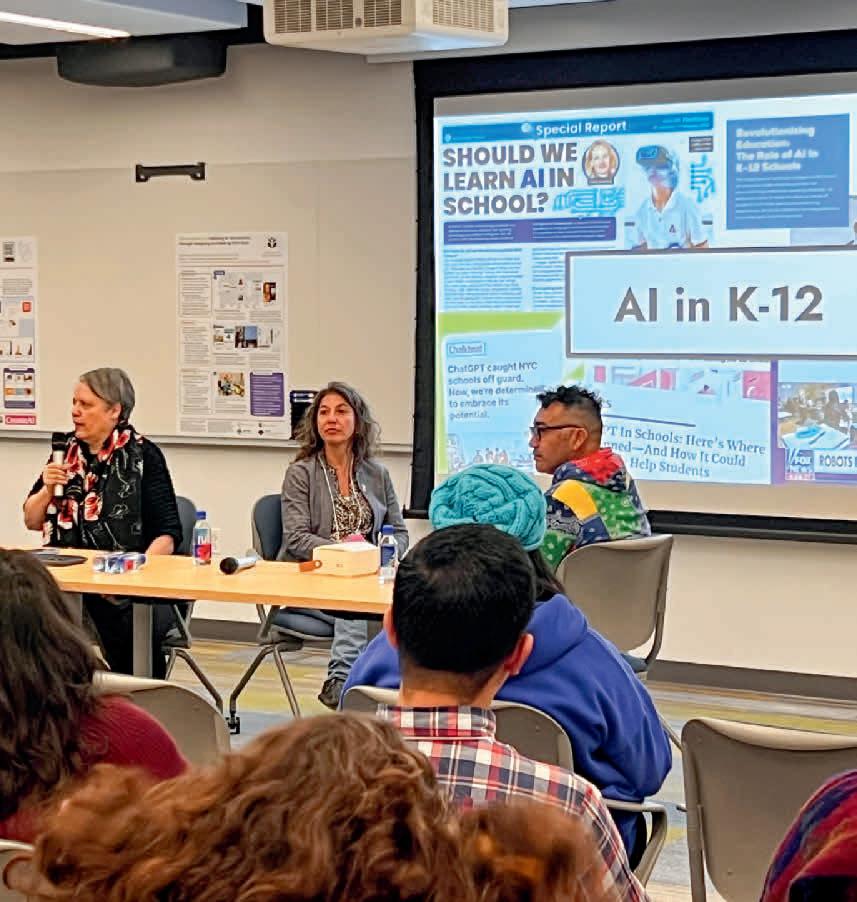
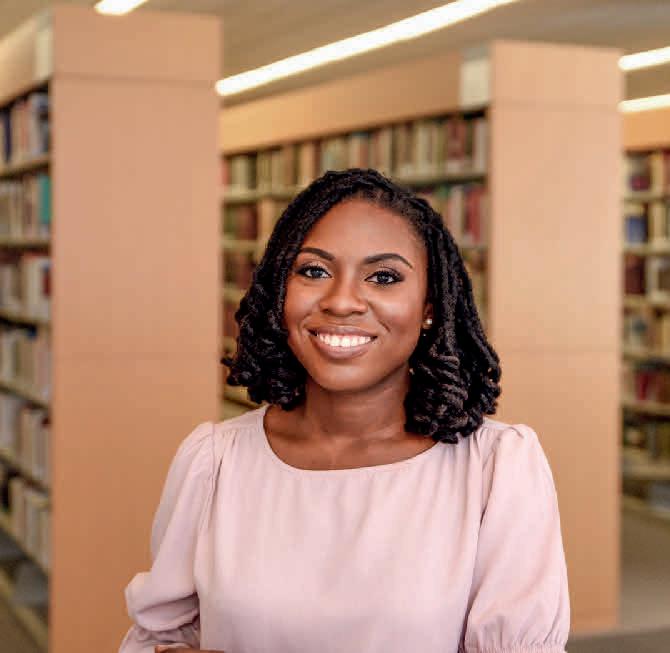
Postdoctoral Scholar Angela Crumdy (pictured above), whose dissertation focused on Black female educators and teacher shortages in Cuba, has won two awards for her article, “Black Cuban women primary school teachers negotiating the responsibilities of social reproduction,” in Anthropology and Education Quarterly. Crumdy’s work was honored with both the Joyce Cain Award for Distinguished Research on People of African Descent from the Comparative and International Education Society and the Karen Lewis Teachers’ Work/ Teachers Union Outstanding Paper Award at AERA 2025.
Campus Workshop
Explores AI Innovation in K–12 Education
This spring, Lori and Michael Milken President’s Distinguished Professor Yasmin B. Kafai (pictured, far left) led a three-day workshop on empowering K–12 students and teachers to use AI technologies as creators, moving beyond mere consumption (e.g., homework assistance). Funded by the National Science Foundation, Create AI brought together researchers, educators, and industry experts to address how students and teachers can actively engage in designing AI applications to foster deeper learning and critical understanding of the technology that is shaping their world.
The workshop assembled participants from across the US and Europe, including industry representatives from Google, Apple, and the Raspberry Pi Foundation. Discussions centered on how AI can be integrated into school curricula, what teachers need to facilitate AI creation in classrooms, and how learning outcomes should be assessed. Panelists also addressed ethical considerations, such as algorithmic bias, and the importance of AI literacy in fostering responsible innovation.
Organizers announced plans to release a comprehensive report, expected this summer, that will guide future research, policy, and curriculum development in integrating AI as a hands-on, creative discipline in schools.
For more: createai-workshop.com
Provost’s
Photo credit: Youning Zhao
On the Road Robert Asante, GRD’19
Growing up in a small village of cocoa farmers in Ghana, Robert Asante walked almost an hour to school each way. The four-kilometer trek from his home in Nyamebekyere to his primary school in Yareyeya snaked through bushes and farms with no clear-cut path. He had to dodge wildlife, and when it rained, the streams running through the jungle would flood, making it too dangerous for the smallest children to cross.
After moving to the United States 26 years ago, Asante’s career took a winding path of its own. He started as a dishwasher at Denny’s and worked his way up to baker at Amoroso’s before learning computers, earning his first degree at Drexel at night while working in IT at the university during the day. He then pursued his MBA and worked in high-ranking information security jobs at Drexel and Citibank. After earning his executive doctorate in higher education management from Penn GSE, he started working at ChristianaCare, the largest hospital network in Delaware, where he was Chief Privacy Officer for more than four years and where he now serves as director of enterprise risk management and artificial intelligence compliance.
“That [GSE] program opened my eyes to the fact that I should start thinking outside my own domain,” said Asante, “and start thinking about what can I do as a leader to effect change, to impact the world around me, to help somebody, to liberate people who have, for a long time, been underserved. GSE empowered me to not be afraid to make the change.”
So when he heard that roughly 50 children in his former village were still enduring the same treacherous walk to school that he had, he was primed to act. With a small personal investment and a network of supportive colleagues and Penn GSE classmates, he set about starting a nonprofit, OurFoundations, with the aim of building a road to connect children to their education—literally.
“It was me deciding to do something radical,” he said. “It didn’t make sense, but I’m glad I did it. If I had spoken with you when I was deciding to do it, you probably would have said, ‘You’re out of your mind,’ because that’s what other people said to me.”
After years of raising money and awareness for the project,
construction began in June 2021. The initial goal was to clear a path through the very hilly forest, build bridges over several stream crossings, and connect a five-mile stretch from Yareyeya to two different parts of Nyamebekyere. Given the difficulty of the terrain, this took longer than planned. But almost four years later, a three-mile version of the road opened to the public this spring. Asante named it for his father, Kwame Asante.
“My dad was one of the first people who moved to that area where we constructed the road, and he helped to name it,” said Asante. “Nyamebekyere means ‘God will provide.’ And my dad always said, the farmers over there, the students over there go through a lot of pain trying to get to their farms, to bring their products to the market, to go to school, walking through the forest. So, he always hoped that one day there would be a road. Unfortunately, he’s gone . . . but that’s why I named it after him— because it was his dream.”
That dream is now a reality. In April, Asante returned to Ghana to celebrate the opening of the road—which is safe for walkers, bikers, motorcyclists, cars, and even school buses. It’s helping students get to school, but it’s also helping farmers get their cocoa to market, allowing pregnant women to get to their midwives, and it’s even bringing customers out to the farms, effecting positive change on the whole community.
“This is the significance of infrastructure,” he said. “Something as basic as a road can provide access to transportation, education, to healthcare, to the market, to economic empowerment.”
Even though the road is finished, Asante and OurFoundations aren’t. Their next project is a community hospital on an eightacre parcel of land that his uncle donated in the central region to support another underserved community.
“What I’ve learned from this experience is that there are a lot of people in this world who want to do good,” said Asante. “They just need a leader to give them the opportunity to help. I couldn’t have done this by myself. Generous people came together to make it happen. . . . And I have a moral obligation to do good with their generosity.”
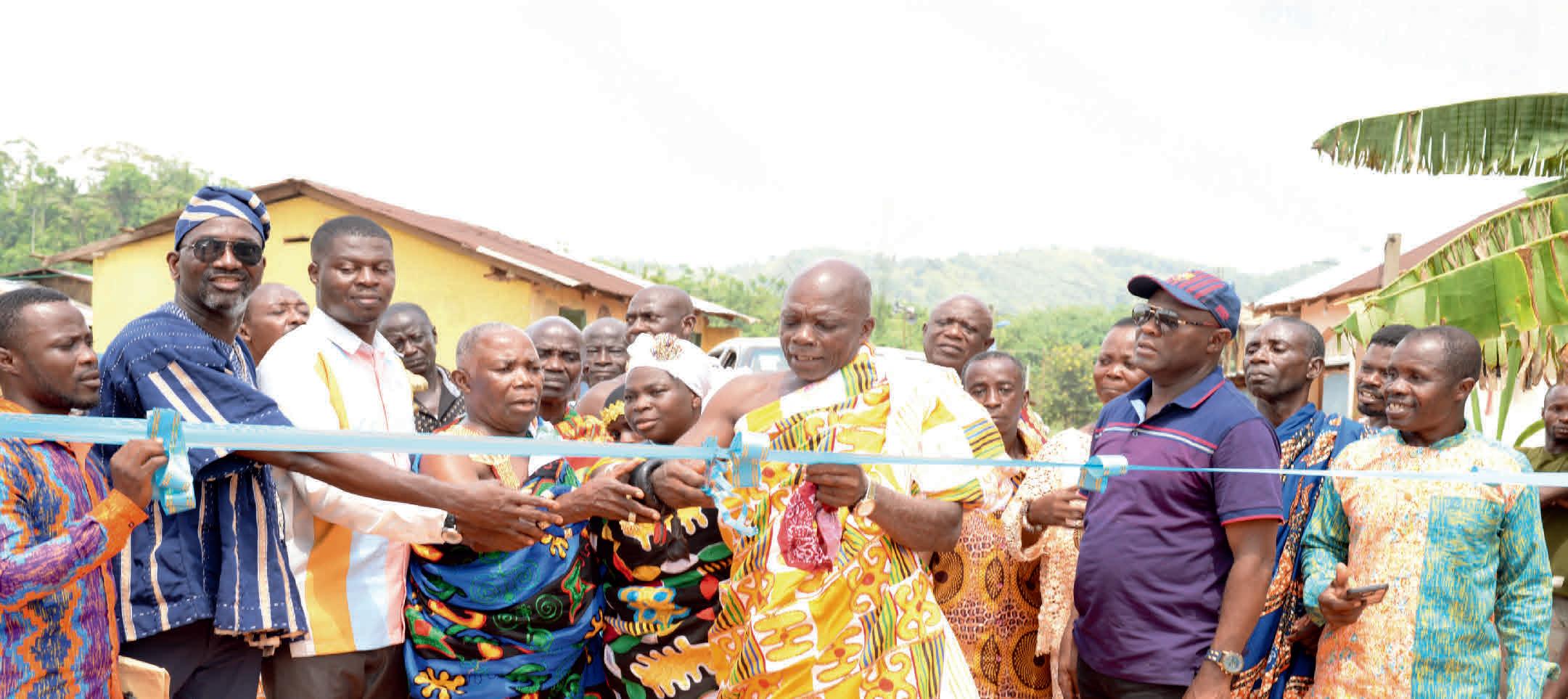
Robert Asante, GRD’19, second from left in matching shirt and hat, celebrates the ribbon-cutting of Opanyin Kwame Asante Road, which he made possible.
POLICY CORNER
Penn GSE experts on the educational headlines of the moment
By Rebecca Raber
President Orders Department of Education Dismantled
THE STORY
THE EXPERT
Professor of Practice and Associate Dean of Executive Programs Julie Wollman, GED'85, who served as the president of Widener University and Edinboro University of Pennsylvania, following experiences as a provost and vice president for academic affairs, dean, doctoral program director, and tenured professor. Wollman studies higher education leadership, strategy, and change management, as well as the college presidency.
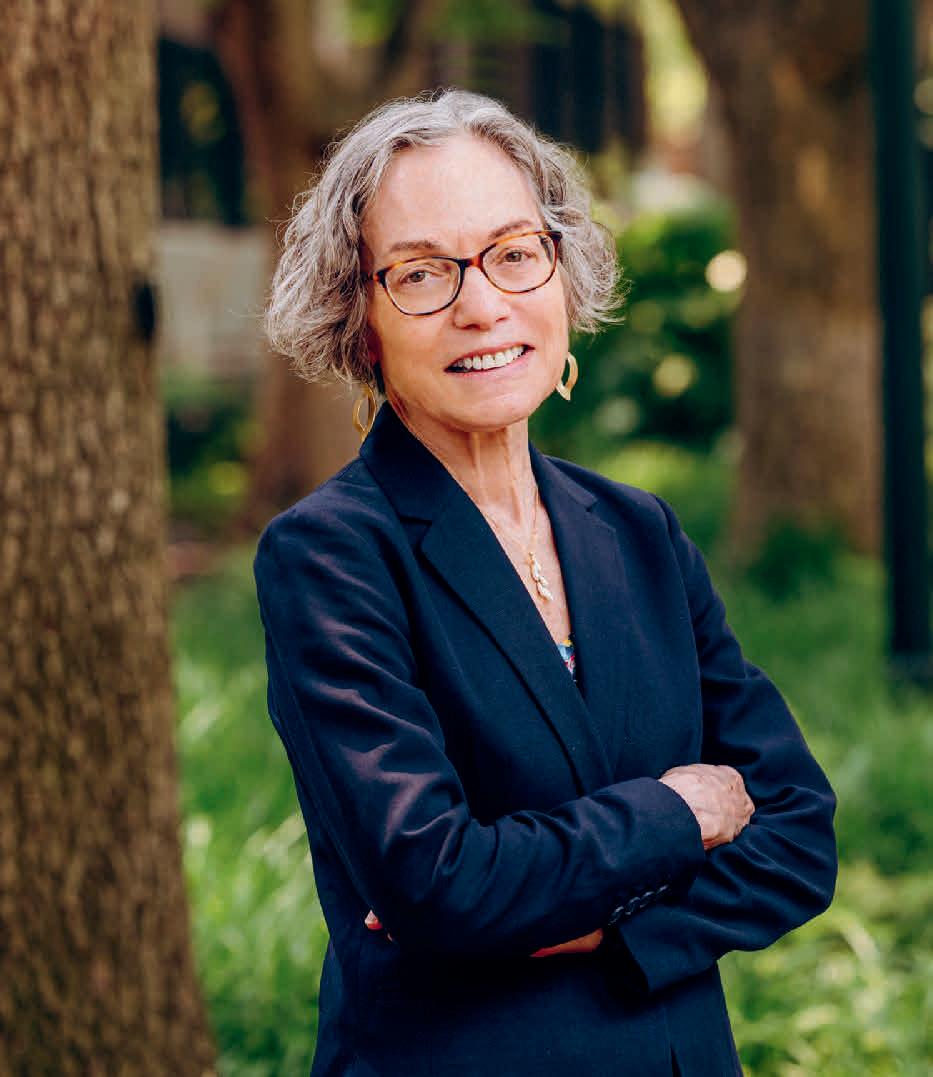
On the campaign trail, Donald Trump promised to eliminate the Department of Education. As president, he began that undertaking by issuing an executive order in March that commands Secretary of Education Linda McMahon to “take all necessary steps to facilitate the closure of the Department of Education and return authority over education to the States.”
Though fully shuttering the cabinet-level department would require an act of Congress—Republican senators did formally introduce such a bill in April—the administration began deconstructing it by cutting its staff in half and canceling roughly 160 contracts.
Because the agency oversees a broad portfolio from across the learning lifespan—from early intervention for infants and toddlers with disabilities, to K–12 special education, to federal student loans for college—there are numerous consequences to these changes. Just in the higher education sector alone, the ramifications include issues with accountability, civil rights enforcement, and roughly $100 billion in federal student loans.
HER TAKE
Wollman points out that there are four major areas in which higher education institutions rely on or are directly impacted by the Education Department: federal loans and Pell Grants, Office for Civil Rights investigations, databases of national statistics on K–12 and higher education enrollment, and accreditation.
There is, she said, certainly room for improvement in some of these areas—the challenging rollout of the new FAFSA (Free Application for Federal Student Aid) last year is one example of how the agency could be doing things better—but she worries about what might replace the current processes and how new ones would be implemented.
“In terms of access to college, the Pell Grant is incredibly important,” she said of the undergraduate financial aid program designed to assist students from lower-income backgrounds. “The goal of all of these programs—Pell, FAFSA, loan programs—is to improve service and access and knowledge, above all, for potential students and their families. But the issue with all of the recently proposed changes is they haven’t been thought through or planned carefully. So there’s a fear of actually making things worse.”
POLICY CORNER
That’s not just a problem for students and families, but for institutions as well. Wollman said that Pell recipients make up 30–70 percent of the student body at many schools, including many regional campuses of state schools. To have such a large percentage of a student body suffering uncertainly about their access to funding could be disastrous to those schools’ enrollments and their bottom lines, which are highly tuitiondependent. Diminished access to higher education would also have widespread consequences beyond campuses.
“If you aspire to go to college, we want you to be able to go because we know that over your lifetime, you’re going to be far more successful financially,” said Wollman. “You’re going to be a better citizen—people who go to college tend to be more engaged in their community, they vote more.” So, she concluded, it benefits us all to have more educated citizens, and hurts us all to have fewer.
The Trump Administration has said that, once shuttered, important core functions of the Department of Education could be moved to other agencies. It has been floated that student loan administration, for example, could move to the Small Business Administration, and the Justice Department has already announced a partnership with the Office for Civil Rights for their discrimination investigations. But, said Wollman, these are not well-conceived plans for improvement, and for some of the department’s responsibilities—especially its data collection and dissemination—plans are less clear.
“The National Center for Education Statistics is so important to our work,” Wollman said of the small statistical agency responsible for monitoring student and institutional performance, which, as part of the Institute of Education Sciences, lost almost all of its employees in mass layoffs in March. “I go there for data all the time—for my classes and for my research—and I honestly don’t really know how we will be able to fully educate our students about what’s happening in higher education or do research that is based on data without it. . . . There’s no other national repository of this amount and type of data. So this is a crisis for research and teaching in higher education.”
Ahead of a looming demographic shift that predicts declining numbers of college-aged students, she said, this loss of data also disadvantages those who want to use such statistics to make college decisions based on things like an institution’s four-year graduation rate or alumni earnings.
“These are really important things to know about schools for accountability,” said Wollman.
As we wait to see the effects of these changes at the Department of Education—as well as the agency’s ultimate destiny—Wollman has advice for leaders of colleges and universities: Work together across institutions, even if that doesn’t come naturally.
“They are going to have to collaborate, despite the exceptionally competitive environment in which they operate, and they’re going to have to collect and share even more of their own data,” she said. “One of the things they can collaborate on is making the case for why higher education is valuable—to combat the public loss of trust—using very specific data on earnings, outcomes, graduation rates, and the economic impact they have on their city or town. . . . We need to change the narrative about higher education and its value. And individual leaders and institutions can’t do that alone.”
IMPACT IN HIGHER ED
Loss of Data Collection
The Integrated Postsecondary Education Data System, part of the National Center for Education Statistics, collects vast amounts of high-quality, trustworthy data from every college, university, and technical and vocational institution that participates in the federal aid programs. This data covers almost every facet of higher education, from how people pay for college to how long it takes them to graduate. Without it, students and their families won’t be able to compare institutions and make informed choices about if and where to go to school, schools won’t be able to benchmark, and policymakers won’t have the best data to make decisions.
Accreditation
Without federal oversight, accreditation could become fragmented, leading to inconsistencies in academic standards and reduced public trust. Institutions might face challenges maintaining eligibility for federal financial aid, impacting student access and institutional operations.
Civil Rights Enforcement
The Department of Education’s Office for Civil Rights plays a critical role in enforcing civil rights laws in educational settings, including protections against discrimination based on race, sex, disability, and more. Shuttering the department would make it difficult to investigate discrimination and would reduce accountability, leaving students with fewer avenues for recourse. This could disproportionately affect marginalized communities and widen existing educational inequities.
Federal Loans
Shutting down the current federal system could create uncertainty around the future of student loans and Pell Grants. The resulting instability could discourage college enrollment and disproportionately affect underserved populations.
View from Campus
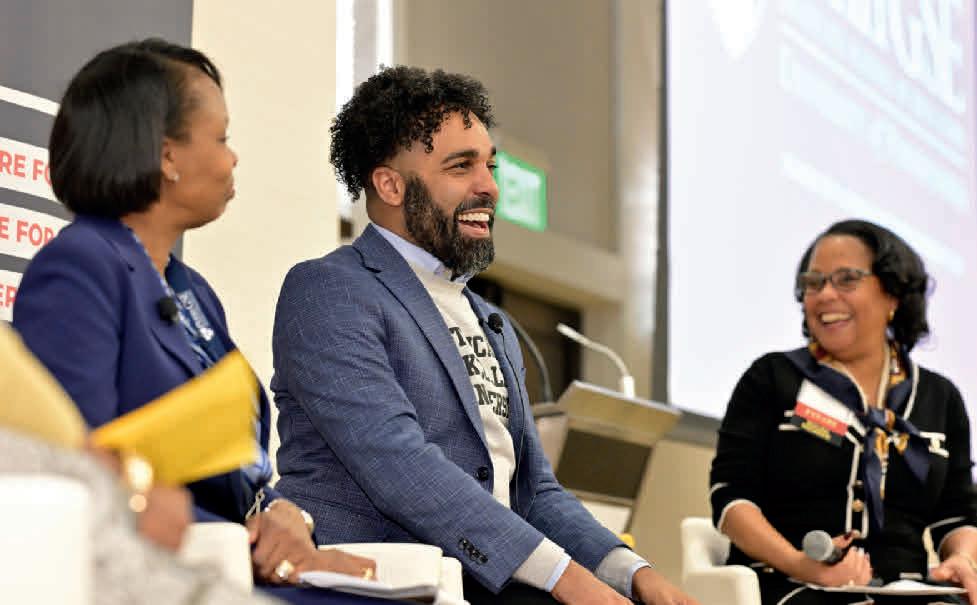
SHOWING THEIR WORK
The day before Commencement, the Office of Student Success hosted its second annual Student Showcase, highlighting the capstone work of more than 30 Penn GSE master’s students. The impending graduates shared posters and presentations—on topics ranging from education policy in Nigeria to the bilingual reception of Taylor Swift lyrics—with their peers, faculty, staff, and other attendees, demonstrating the depth, rigor, and real-world impact of their student inquiry. See more: penng.se/showcase25
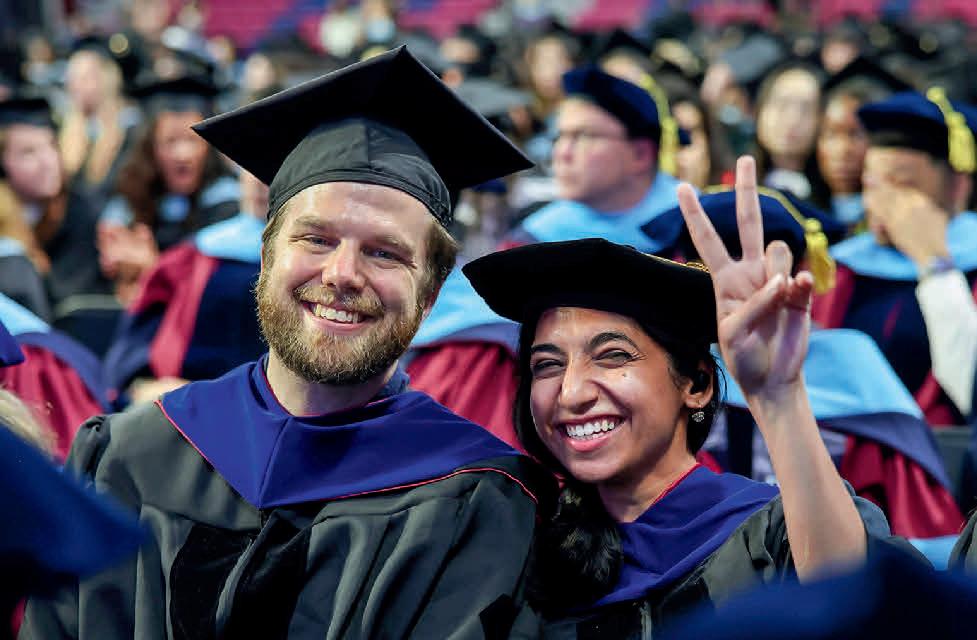
DIALOGUE IN DIFFICULT TIMES
This year’s Alumni Weekend programming included a timely and engaging panel, “Discourse and Democracy: The Classroom as a Catalyst for Bridging Differences,” during which (from left) Dean Katharine Strunk, MRMJJ Presidential Professor Sigal Ben-Porath, and Associate Professor Abby Reisman discussed how educators can facilitate open and constructive classroom conversations during polarizing times. “Cultivating the capacity and the dispositions that are the foundation for a good and productive dialogue, for me, is really the linchpin of the connection between democracy and knowledge,” said Ben-Porath. Enjoy photos from Alumni Weekend: penng.se/alumni25
FOLLOW THE LEADERS
In January, Penn GSE welcomed back close to 100 alumni from the Executive Doctorate in Higher Education Management program for the 20th annual Higher Education Leadership Conference. The theme of this year’s three-day event was “The Leadership Moment,” with panels and keynotes addressing significant issues in the field, from the "enrollment cliff" to school mergers and acquisitions to speech freedom. One panel, on the emerging leadership challenge at HBCUs, featured (from left) former Rust College President Ivy Taylor, GRD’20, UNCF’s Edward Smith-Lewis, GRD’25, Mercer Community College Professor Andrea Lynch, GRD’20, and President Emeritus of Huston-Tillotson University Colette Pierce Burnette, GRD’15 (not pictured). For more: penng.se/helc25
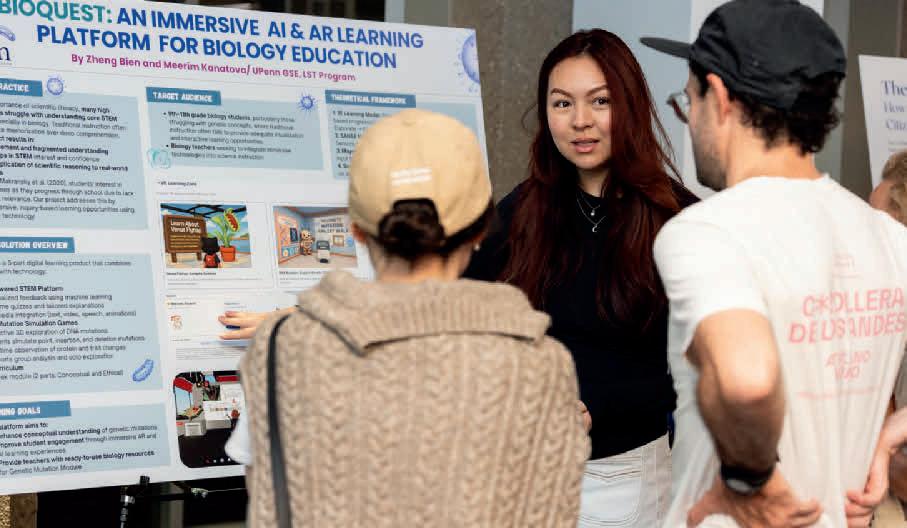
READY FOR THE FUTURE
On May 17, in the Palestra, Penn GSE welcomed nearly 700 graduates into its alumni community at this year’s Commencement ceremony. Invited speaker Angela Duckworth, Penn’s Rosa Lee and Egbert Chang Professor and a 2013 MacArthur Fellow, not only spoke about her own favorite teacher, Mr. Carr, but wondered about the future of teaching in the age of generative AI. She urged the graduates to help students use these new tools to catalyze, not cannibalize, deeper thinking. “I don't want you to be techno-skeptics or even techno-idealists,” she said. “I want you to be techno-curious. And AI-literate. And to bring your students along with you.” For a full gallery from Commencement: penng.se/commencementpics25
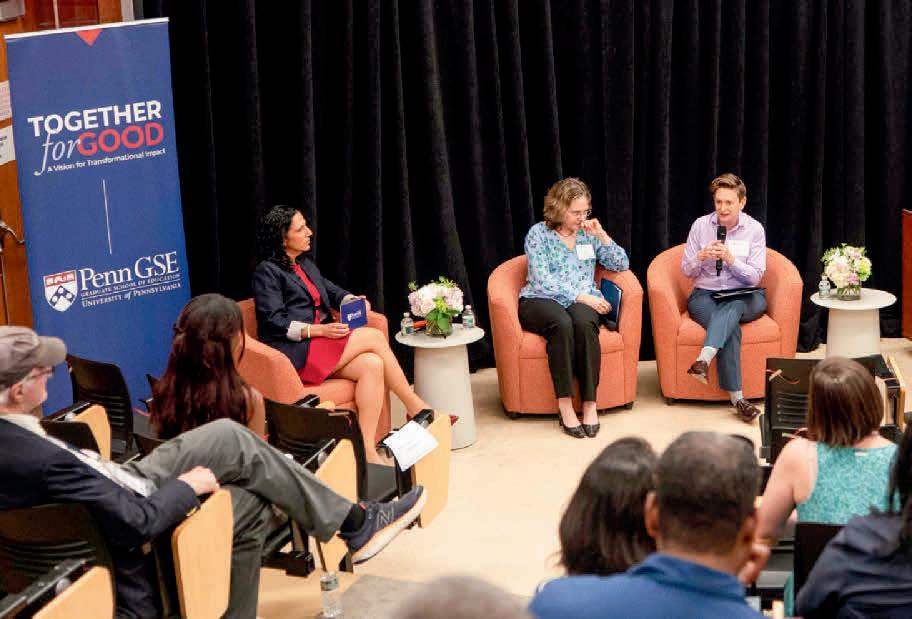
DeBalko Photography
Krista Patton Photography
Krista Patton Photography
HKB Photo
An update on Penn GSE's recent strategic plan and some examples of the work that it is encouraging.
BUILD
Prepare and sustain a highly skilled education workforce from preschool through postsecondary education.
THE LATEST
To demonstrate the impact of free teacher education, a new anonymous gift of a million dollars will make it possible for Penn GSE to offer full scholarships for some outstanding teacher education master’s candidates over the next three years.
COLLABORATE
Collaborate with local, national, and global communities on programs and scholarship for the public good.
Penn GSE partnered with the School District of Philadelphia, Foundations, Inc., and the Consortium for Policy Research in Education to create an innovative, scalable college- and career-readiness model for students. Called the Academy at Penn, the five-year, grant-funded initiative will equip students from High School of the Future and Horace Howard Furness High School with academic support, career exposure, and socialemotional resources, starting this summer.
TRANSFORM
Innovate by bridging theory and practice to conduct educational research with consequence.
The School launched two new, cutting-edge AI-focused programs. Pioneering AI in School Systems (PASS), funded by the Marrazzo Family Foundation, is a first-of-its kind professional development program that aims to equip educators and administrators with the tools and knowledge necessary to integrate AI into schools. It launched in select Philadelphia public schools free of charge to the district this spring. Penn GSE also introduced the Ivy League’s inaugural AI degree program in education, Learning Analytics and Artificial Intelligance, which will welcome its first class—fully online—in the fall.
Elevate education‘s role within democratic society.
Several public events this spring engaged Penn GSE students and the general public in issues of education and democracy. Among the slate of programming was a panel on the issue of “Should Educators Share Their Political Beliefs in the Classroom?” and two McGraw Center for Educational Leadership–sponsored events—a bipartisan discussion with the PA House of Representatives’ Education Committee Chairmen on education policy in the Commonwealth and a public conversation between Dean Katharine Strunk and former US Secretary of Education Arne Duncan.
This February, we asked alumni during the Champions of Transformation month-long giving challenge to give in honor of the faculty member who shaped their Penn GSE experience. Our community responded with 111 donations and scores of stories of inspiring teachers and mentors. Here are just a few of the Penn GSE faculty who were celebrated:

Thank you
Michael Golden and Amanda Antico played a pivotal role in shaping my education entrepreneurship journey. Michael’s “How Innovations Flourish” class was one of the most impactful courses I took, introducing me to changemakers in education and pushing me to think critically about scaling innovative solutions. Amanda’s “Education Entrepreneurship” class provided invaluable frameworks that deepened my understanding of leadership, sustainability, and impact in the nonprofit space. Their mentorship and guidance helped shape my path, and today, I lead Start Lighthouse, a literacy nonprofit dedicated to dismantling the literacy crisis by embedding culturally responsive Literacy Hubs in Title I schools across NYC.
Dr. Allan Glatthorn chaired my dissertation committee and . . . he encouraged and supported me, bringing in a professor from Harvard GSE to counsel me and bring unique expertise to my study. His student-centeredness, his work ethic, and responsiveness were truly inspirational and key to my special experience at Penn.
Mary Golin taught an excellent methods course in my MSEd degree program in the late 1960s. Also, she was my supervising teacher for my certification. Her ideas about teaching social studies and history resonated with me throughout my career. I am grateful for her expertise and interest in me as a graduate student and new teacher.
It’s been many years since I graduated from Penn GSE, but I will never forget Susan Lytle, who guided me with care and creativity through my first classroom teaching experience at what was then Furness Junior High in South Philadelphia. I had romanticized inner-city teaching, having read "Up the Down Staircase" one too many times, and would not have gotten through the experience without Dr. Lytle’s support and encouragement.
Susan Montague, GED’'74
Gengqi Greyson Xiao, GED’23
I would like to take this moment to express my gratitude to Professor Nelson Flores. He supported my independent research project on creating a curriculum for ESL learners to shape their language ideologies. He is always supportive and encouraging of my ideas, which made me continue to pursue a doctoral degree in language education. I’m grateful for his influence on my growth as a scholar and educator.
Ginny Davis, DH’80, CGS’98, GED’06
In 2006, Professor [John L.] Puckett supported my independent study research project that focused on the history of Penn’s Schoolmen’s Week program. His enthusiasm for my research topic meant so much to me.
Did a Penn GSE faculty member inspire you or shape your career path? Let us know by emailing rraber@upenn.edu to be featured in an upcoming issue.
From Subject
Rina Madhani, GED’19
–Paul Adams, GR’87
Michael Wallace, GED’69
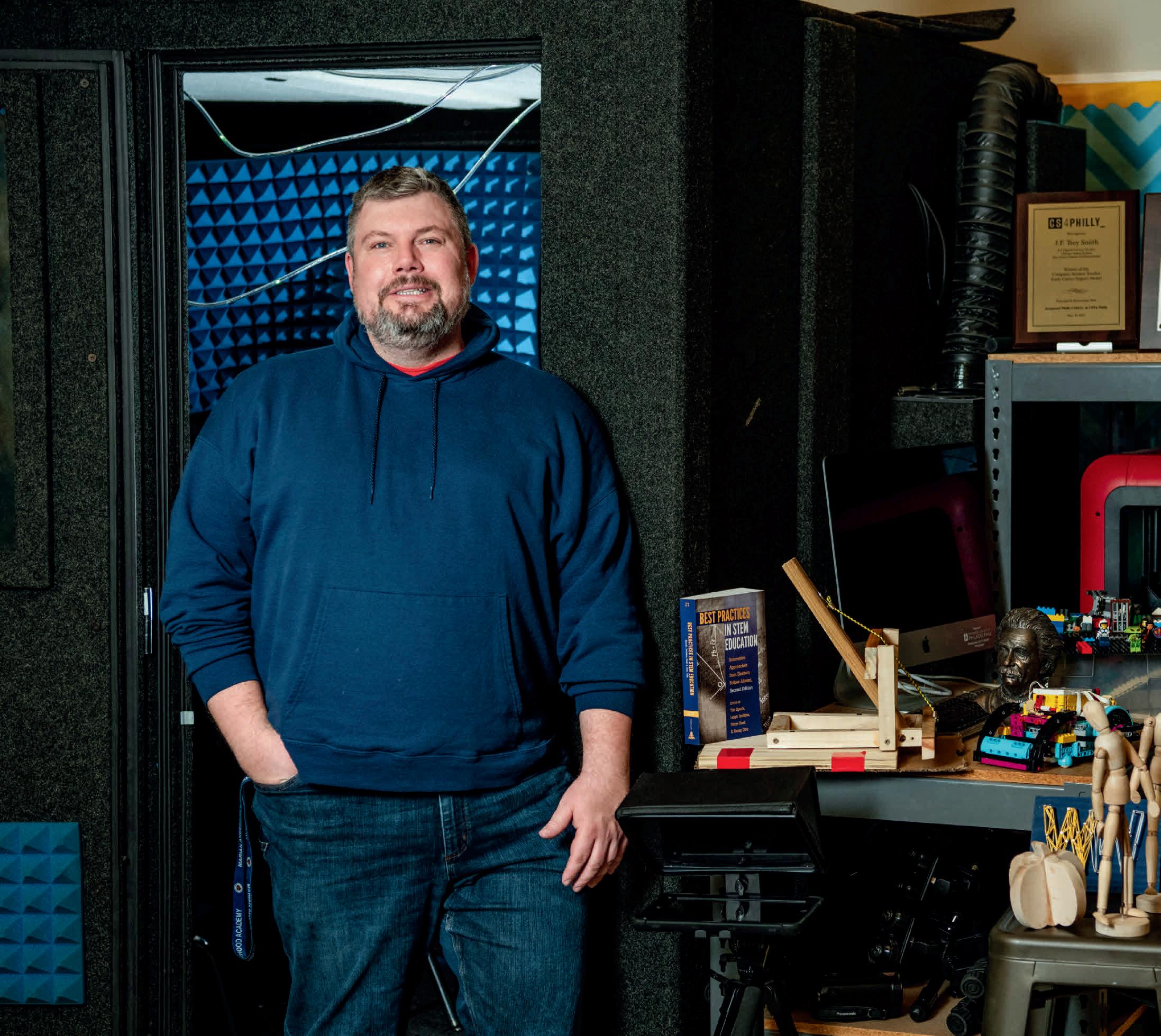
1 Podcast Studio

Our Alums in Their Spaces
The makerspace, itself, inspires me. The teacher before me had gotten grant money to make the podcast booth happen. . . . And now I have fifth graders working on a wildlife podcast, trying to teach people cool things about nature. I have a first grader right now who’s doing video podcasts about NFL players. It’s on YouTube. . . . I think being in the booth— having a space in school where, as a student, you get to be with your friends and be creative—is important. We can develop projects and supports for them, but the impulse to create something is theirs.
2 Book
2
When I was an Einstein fellow, I met someone who’s now a good friend, who teaches outside of Detroit. We wrote a chapter in this book, Best Practices in STEM Education: innovative Approaches from Einstein Fellow Alumni (2nd edition, Peter Lang), about integrating social studies and arts with science teaching and using project-based learning. I’ve been doing work in Michigan over the past four summers, working with teachers around this very topic and facilitating professional development with them.
3 Catapult
I host a science fair club after school, coaching students on how to do a science investigation. I’ve got a fourth grader who wants to do something on catapults. So, we’re measuring, building, looking at examples. Right now, this is a Frankenstein of a catapult, because we made a bunch of decisions based on the materials we had, but he is super happy with it. Now we’ve got to figure out how to test it. What’s our independent variable that we’re changing? He’s going to do some measurements based on changing the tension in the line, and we’ll see how it goes. I’ve got another project
5
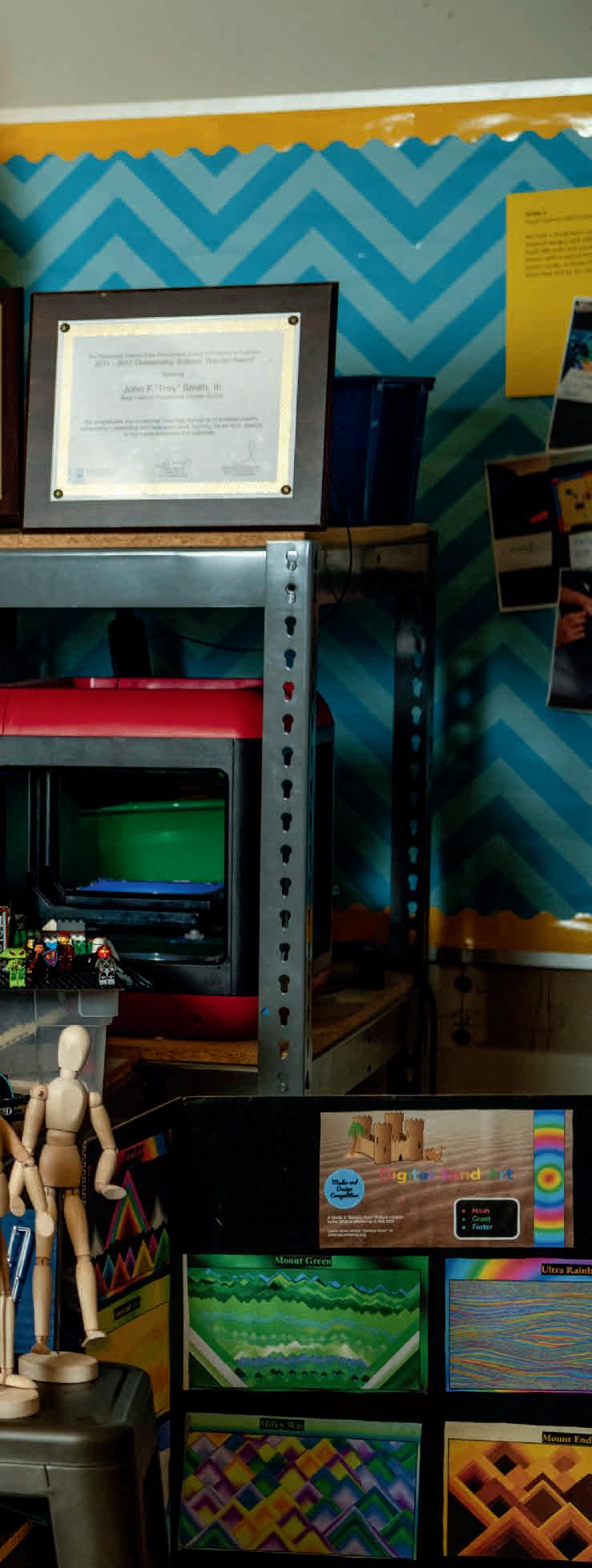
where we’re measuring air quality in different classrooms around the building. Another student wanted to see at what temperature glass shatters. We’ve got water filtration projects happening. It’s all science, but they get to use this workshop to make their project.
4 Einstein Bust
In 2014–2015, I was selected for the Albert Einstein Distinguished Educator Fellowship, and I worked for a year as a legislative fellow with Senator Kirsten Gillibrand from New York. At that time, No Child Left Behind was being reauthorized, and it was actually one of the only
J.F. Trey Smith, GED’09
K–8 DIGITAL LITERACY TEACHER
MARIAN ANDERSON NEIGHBORHOOD ACADEMY
J.F. Trey Smith may have graduated from Penn GSE more than 15 years ago, but that doesn’t mean he’s left the School. In fact, he may be more involved than ever. He is a teacher consultant with the Philadelphia Writing Project, a network for teacher-led professional development housed at Penn GSE, where he has led four grant-funded initiatives. He also teaches secondary science education methods to students in the School’s Independent School Teaching Residency program.
But his “day job” finds him working with much younger learners, teaching kindergarten through eighth graders in the multidisciplinary makerspace at Marian Anderson Neighborhood Academy in Southwest Center City. As a digital literacy teacher, he uses the technology and tools in the makerspace to involve students in hands-on learning. Smith designed yearlong themes for each grade level to make sure they are developing not just competencies with digital tools but also science and social studies proficiencies. For their “Food Around the World” unit, his first graders make digital cookbooks and solar ovens. For “Plants and Pollinators,” his third graders make robotic models of bees and plants and use a 3D printer to prototype creative planters.
Smith’s innovative pedagogy has won him awards from the Computer Science Teachers Association of Philadelphia, the Philadelphia Chapter of the Pennsylvania Society of Engineers, the National Liberty Museum, and even President Biden, who gave him the 2021 Presidential Award for Excellence in Mathematics and Science Teaching. He’s a researcher, too, studying STEM curriculum and primary source usage in classrooms. That may sound like the work of a PhD, but Smith hasn’t finished his— he completed three years at Northwestern University—and isn’t sure that he will. He is happiest in the classroom and isn’t eager to give that up for the lecture hall.
“I’m trying to be a teacher-leader,” he said. “I think a lot of people think that to be a leader in education you’ve got to be a principal or a researcher or a professor. But I get the best of a lot of worlds by being an adjunct, staying in the classroom, managing grant projects, staying connected to Penn, and running professional development. . . . I can still work on a research project, but it’s based on my classroom and on the work that I do.”
bipartisan bills moving through Congress. I helped with some of the computer science and career and technical (CTE) legislation, and I found some Southern senators who were into computer science and said, “Hey, would you work with my Democratic boss to co-sponsor this?” I actually have some amendments in that law that I helped bring to fruition. After that, I was selected to be the first-ever teacher-in-residence for science at the Library of Congress for a year.
5 Shadow Figurines
In sixth grade, we do “Lights, Camera, Action” as our theme, and one of the
things we’ve focused on is stop-motion animation. I ask them to find a culturally significant dance on YouTube and to try and recreate it in stop-motion using these characters. It’s actually the first year I’m doing this. We had been doing a lot of Lego stop-motion, but the Lego minifigures can be really hard for some of the students to manipulate to show the changes in movement. These dolls are perfect. The students can use their Chromebooks to take the photos, and I found an app that is free for them to do the animation because I took a Teachers Institute of Philadelphia course at Penn.


The Future of College Admissions
Penn GSE alumni and faculty experts look ahead, past the coming “demographic cliff,” at the challenges and opportunities in the field.
By Kathryn Levy Feldman

Numbers don’t lie. And when it comes to the future of admissions for higher education, they reveal a challenging reality. According to the Hechinger Report, the United States is facing a looming enrollment cliff, in which there is a dramatic drop in the number of high school seniors beginning in the fall of 2025. According to the US National Center for Health Statistics, the total birth rate has remained below the level of replacement since 2007 and continues to fall. By 2039, higher ed consulting firm Ruffalo Noel Levitz estimates that there will be 650,000, or 15 percent, fewer 18-year-olds per year than there are now. This year’s graduating cohort is the last large one before the implications of this decline take their toll not only on college admissions but on the labor force and general economy.
According to Georgetown University’s Center on Education and the Workforce, the US is projected to have six million fewer workers between 2025 and 2032. The impact on colleges and universities has been described as Darwinian—only the strong and perhaps market-savvy will survive—but it will not impact all areas of the country in the same way. Nonetheless, when combined with the rising cost of education, mounting student debt, the Supreme Court’s decision to abolish race-conscious admissions programs, and waning confidence in the “value” of a college degree, it’s a challenging time to be in university admissions.
Numerous Penn GSE alumni work in the field, both in admissions and college counseling offices, but none of the alumni we spoke with are as pessimistic about the future as those numbers would have you believe.
























Begin Admissions








SchoolClosureduetounderfundingrestartadmission










Visa App roved? roll again evens go forward odds move backward

4-YearInstitution
AccesstoanAdvisor











Majors
Change gobacktwo spaces































Darren Conine, GRD’22, senior vice provost for enrollment management and student success at Merrimack College in Massachusetts, admits he has a “unique take” on the demographics. As he pointed out, “Demographic cliffs don’t just happen out of nowhere. You can plan for it, and you can plan for what your response is to that.”
assure you that hundreds of thousands of dollars were spent in efforts across America to combat what we saw as this gloomy warning that there were going to be massive school closures and a fairly bleak future for a lot of small private schools.”
enrollment started to shift to focus on those parts of the country.”




Leykia Nulan, GED’09, associate dean of admission and director of access initiatives and partnerships at Wesleyan University in Connecticut, concurs. “We’ve been talking about this for many, many years now,” she laughed, “probably since 2018 when Nathan Grawe released Demographics and the Demand for Higher Education. I can





Nulan thinks that what has panned out is what was predicted—small school closures from tuition-driven institutions—but many schools, especially the more selective ones, have been somewhat insulated from the fallout. The Northeast, according to Conine, has “been in a demographic decline for over a decade,” taking effect after the Great Recession. He said the same is true of the Midwest. “I think once people wrapped their heads around the South and the West being places in the country where we were going to see more births and more college-age students available, strategies on recruitment and

Mark Butt, GED’05, director of admission at Georgia’s Emory University, pointed to what’s happening in Atlanta. “We are seeing a lot more regional admissions officers being stationed here as one of the major hubs in the Southeast,” he said, “because we’re not experiencing, or are not set to experience, as much demographic fall-off with respect to the number of high school graduates.”

Demographics and geography aside, the top tier of highly selective schools, as well as the state flagship institutions, seem relatively safe from fluctuating populations. “Unfortunately, we have seen community colleges hit the hardest by the demographic cliff, and also because of COVID,” Nulan said. She added that it is going to “continue to rattle tuition-driven, small, niche schools that are not necessarily able to pivot in what they offer quickly.”





Pivoting, according to Conine, is the name of the game. He explained that Merrimack is continually assessing its expertise and the needs of students, adapting by creating new programs to meet those needs. This approach allows them to capture a larger share of the student market, even as the overall pool of students shrinks. He also shared that the team is focused on anticipating future job trends in the Northeast region and aligning campus offerings accordingly, and that over the past 10–15 years, their enrollments have actually doubled. “Just because the demographics are shifting doesn’t mean that an institution has to shrink and die,” he said.
















Responding to the needs of the population it serves is clearly an important factor in maintaining and expanding a school’s reach, especially since the options for a college-bound student in the US are vast.





‘brand names.’”
“We have this incredibly hierarchically organized college system in the United States, which is different from almost every country, with a pyramid of relatively few, very elite schools at the top and community colleges and local-serving institutions at the bottom,” said Penn GSE Associate Professor Rachel Baker, who studies college access and community college success. “That image is helpful, but problematic, because it necessarily imposes this order where some are better than others, which is not the case, but that is how people talk about it.” Students must look beyond what she describes as “this very thin sliver of students” who are all competing for the same spots at the same schools. “I would hope Americans, by and large, see the value in the smaller, more regional schools that really do cater to the needs of the local economy,” she added.
There is also the growing realization that the “college-for-all mentality,” as Baker calls it, is not the answer. “There are options that aren’t college, like bootcamp-training programs and noncredential options or microcredentials that are not on students’ radars for a number of reasons that should be,” she said. “Expanding the notion of what postsecondary training can look like seems important.”
Jamiere Abney, GRD’25, an admissions officer at Seattle University, agrees. “We’re all competing for fewer traditional-age high school students going to college,” he acknowledged. “But what that does is open the door for nontraditional students.”
Adult learners are one such category, and so are those who have some college but no degree reentering the system. “You can attract people who may be at change points in their careers or life that could benefit from an education if they didn’t get one right out of high school. What is your pitch to a different community? If I’m an older person, I’m not looking for an experience. I want to know what tangible skills I am going to get,” he said.

YOU'VE LEARNED A NEW SKILL AND RECEIVED A CERTIFICATE!
Assessing Market Need


Many schools have developed certificate or credential programs targeted at specific markets. These are programs that take less time, cost less money, and have a narrower focus than a traditional degree. And for the schools that offer them, they have the advantage of getting potential applicants to campus and provide alternative sources of income.
In the graduate space, however, according to Brent Nagamine, GED’19, director of MBA admission at the University of Washington Foster School of Business, these microcredentials provide a certain amount of competition for the advanced degree. “The folks who are administering those microcredentials say, ‘Hey, we’re giving you enough, and it’s at a more affordable [cost] and much faster pace.’ And the folks who are offering the full degree counter, ‘We’re giving you a more thorough and in-depth experience.’” Some of it is branding, he said, but there is also the risk of creating so many programs to appeal to new market segments that it is no longer financially sustainable. “These programs are not purely revenue,” he said. “They also incur expense.”
Those transferring from community colleges are another market that needs different support. “Figuring out how to transfer [from a community college] and finish that degree can be complicated and hard to navigate,” said GSE Centennial Presidential Professor and Penn's Vice Provost for Faculty Laura Perna, C'88, W'88, who studies college access and affordability. The rate of students transferring from a two-year college to a four-year one is extremely low, according to Perna’s GSE colleague Baker, and some of that has to do with the fact that students have already obtained the credentials they need for their jobs and see no need to continue.

It's also, Perna said, about how schools serve students. “We need to ensure that no matter where students go to college, they have access to an advisor, to a person who can support them,” she said.










The Price of Admission

The rising cost of tuition continues to be a factor in the decision of both whether and where to attend college. On the high school admissions end, Juan Acosta, GED’07, director of college counseling at the Paideia School in Atlanta, who has been a college counselor for 19 years, has seen families seeking more scholarship opportunities. “I think I am having more conversations that I maybe hadn’t had before around the process of applying for financial aid and looking for scholarships,” he said. “And for some, staying at one’s flagship institution is much more financially attractive than some of the private schools’ $90,000 price tag.”
The landscape is changing. Acosta said that some of the schools his students applied to in the past no longer exist, citing Birmingham-Southern College, a private liberal arts college in Alabama, and Mills College in Oakland, California.
It doesn’t help, noted Perna, that there is a lot of complexity with college costs. There is what she calls the “sticker price,” the advertised cost of attendance, versus the “net price,” the cost of attendance minus grants. “We really don’t have clear messaging many times,” she said. “Every school has a different tuition and other costs and different methods for how financial aid is determined. It’s too complicated for people to understand how much it will actually cost them to attend a particular institution. Even with the simplified FAFSA forms rolled out last year, it’s still hard. For students whose parents haven’t gone to college, it may be the student who has to take on the responsibility of figuring things out and then really making the case that college is affordable to their family.”
The Global College Market
Abney, who was director of undergraduate admission at Western Oregon University before his current position in Seattle, recounted that, “At Western, because we were an emerging Hispanic-serving institution, everything we did was in both English and Spanish. We had to be very conscious of the fact that we weren’t leaving anyone out in terms of the types of events or programming that we were doing.”
All the admissions officers we spoke to noted that the market for international students is highly valued. “Many institutions have very global values,” Butt said. “They believe in their campuses being like the United Nations or the Olympic Village. Research would suggest that teams are better when the people on those teams are different, in whatever way you look at that.” To that end, Butt sees significant emerging markets from India, Brazil, Vietnam, Saudi Arabia, Nigeria, and











Ghana. “The demand for American higher education at the undergraduate level is still very high in a lot of areas,” he said. “I think the question is more what is the investment for that family to send their student to the United States?”
The fluctuating exchange rates and the rising strength of the American dollar over the last few years have made “it even harder for our international students to be able to afford a US education,” said Nagamine. Add to that uncertainty around policy changes for international visas and the landscape is “certainly unpredictable,” said Butt. To be clear, however, said Leslie Levin, C’97, vice dean of admissions and student affairs at Penn GSE, “If there were to be more stringent restrictions, it would be to the detriment of all institutions that enroll international students.”
Despite the challenges, GSE alumni working in admissions emphasize the broader value of a college education, seeing it as more than just a financial return on investment. “It’s not just the ability to make money, but the experience and social capital that you gain in understanding how to navigate the world,” said Abney. “You learn skills and meet people through higher education in ways that aren’t just reflected in what you make in dollars and cents, but in skills that you have that you might not gain otherwise.”
The focus moving forward will need to be on making sure prospective students and their families understand this and that schools be able to adapt their approach in telling their story to them. Says Wesleyan’s Nulan: “There’s not going to be a single lever that would save all of the schools out there. . . . And I think, for that reason, the only strategy you can rely on is pivoting to offer what you think speaks to the audience that wants to hear from you.” ■














educating in The Biggest Classroom
They may work outside of traditional school settings, but for the Penn GSE alumni who work in educational media— from public television to podcasts—they are teaching, nonetheless.
By Lini S. Kadaba
After a year as a music teacher during the COVID-19 lockdown, Nathan Krebs, GED’22, entered Penn GSE’s Education, Culture, and Society program to figure out how to have a different sort of career in education. His “aha!” moment came when he took two courses that opened his eyes to a new possibility: public television.
Both “Ethnographic Filmmaking” and “Community Youth Filmmaking” enabled him to partner with Philadelphia high schoolers on film projects through Penn’s Netter Center for Community Partnerships. “Those courses were my first exposure to the technical side of things—how to use a camera, how to set up interviews,” he said. Krebs loved it, especially talking to community members and sharing their stories, and wanted to plot a path that combined media and education. “And so, here I am.”

“Here” is PBS Michiana-WNIT, a South Bend, Indiana, public broadcasting station that covers 560,000-plus households in northwest Indiana and southwest Michigan where Krebs is senior


producer. His program, Education Counts, has tackled subjects that include skiing opportunities for those with special needs, the science of bubbles with a local “bubble-ologist,” a cemeterypreservation workshop, and no-till farming. “It’s designed to show the lifelong journey of education,” said Krebs, who also has an education-centered podcast in the works.
“There’s definitely value in creating education that’s accessible,” he said. “That’s a big goal for our station, making sure we inform the community about what’s going on, share stories about things relevant to them.”
Like Krebs, many GSE alumni work in educational media. Even though they aren’t teaching in a traditional classroom, they’re tapping into creative ways of sharing knowledge with everyone from preschoolers to adults. In some ways, these alums have the biggest classrooms of them all: making TV documentaries and interactive, educational websites; assessing curricular benchmarks for children’s programming and new products; hosting talk shows that grapple with difficult social issues; and developing new platforms to augment learning around the globe.
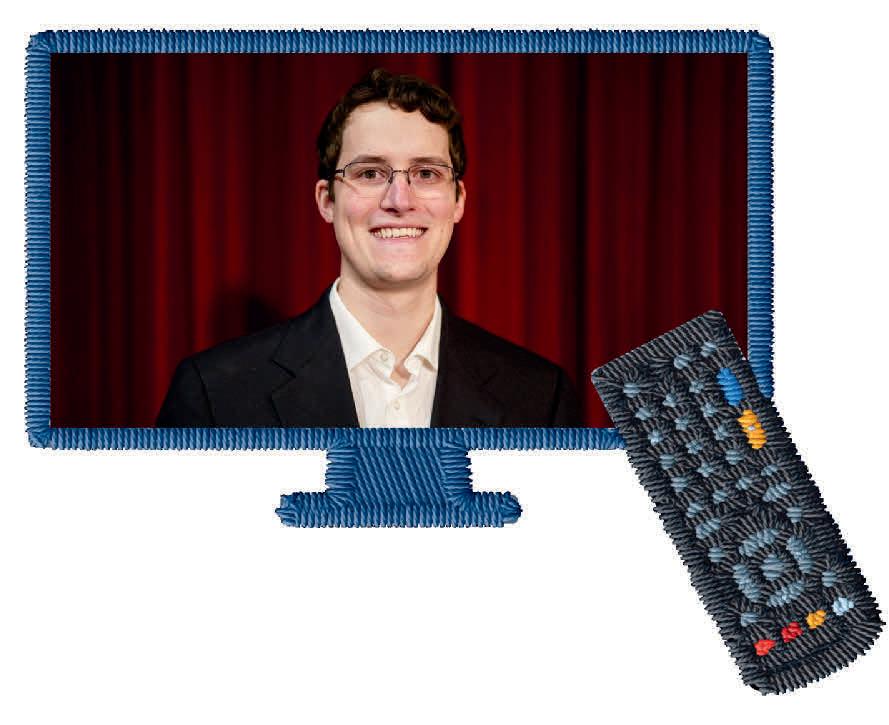
SOUND ON
“I knew I wanted to effect change beyond the classroom,” said Leandro Otero, GED’11, the senior account partnerships manager for the Soundtrap for Education program that two million students use globally.
Soundtrap’s cloud-based virtual studio, founded in 2012 and bought by Spotify in 2017 before being spun off last year, aims to get kids excited about making music and podcasts and serves as a pipeline for the next big names in digital music. For Otero, though, this work is about much more. It’s the next step in a career devoted to improving under-resourced schools—a passion born of his own experiences, he said.
Growing up in Santa Ana, California, Otero attended underfunded schools until he moved one city over to Irvine. “It had totally different opportunities,” he said. “It had the best everything—the best student programs and sports. I had such a robust experience.”
As a political science major at California State University, Fullerton, Otero wanted to take on the disparities he had seen firsthand. Then, he moved to Philadelphia and, through Teach for America, taught English and journalism by day at a Port Richmond high school while earning his Penn GSE master’s in urban education by night.
He liked that he was able to use the lessons in technical skills and pedagogy that he learned as a student the very next day in his own classroom, but what “lit a fire in me,” he said, were his studies in policy that revealed inequities over generations. “The unit of change can’t just be a classroom. It has to be a school building. It has to be a community, a district, at the state level.”
Otero returned home to California, multiplying his impact by recruiting teachers for a charter network and then placing
more than 1,000 educators in Los Angeles schools for Teach for America, where he rose to managing director. Soundtrap for Education, introduced in 2015, offers even more opportunities to create change, he said.
Otero covers partnerships from Illinois to Hawaii, and his clients include San Francisco and Los Angeles school districts. School subscribers pay a per-student rate for access to audio recording, a database of loops and sound effects, curriculum ideas, and more. Otero touts the benefits: Soundtrap allows for creativity in assignments, such as spoken-word poems or history projects where students interview each other as historical figures and add relevant sound clips from propaganda commercials or famous speeches.
The digital audio workshop also enables access. With no fancy laptops needed, students can meet virtually for orchestra or band practice— an important option at a time when many schools are cutting music programs. “It’s always been about fighting for access and equality,” he said. “That’s been my life calling."
“Penn GSE shaped me as a leader,” he said. “It’s given me credibility and expertise to feel confident in whatever space I’m in and opened doors to so many other ways to make an impact.”
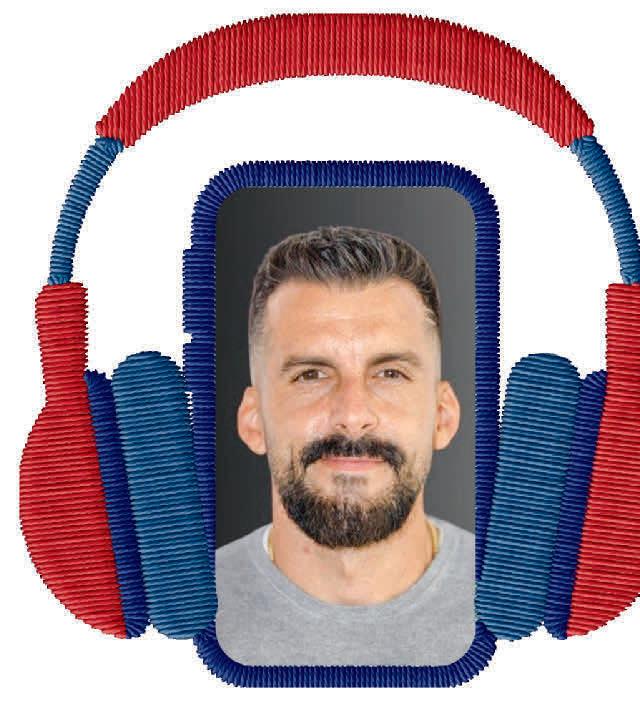
LIGHTS, ACTION, EDUCATION
For longtime marketing and television executive Travis E. Mitchell, GED’16, his GSE degree in education entrepreneurship unlocked a way to give back to his hometown of Raleigh, North Carolina, and more. After scaling a national digital cable station in Atlanta, he led the nonprofit Communities In Schools of Wake County, using his media background to make short films that highlighted student experiences and promoted the organization. He also launched the 2012 Students Maximizing Academic Resources through Technology (SMART) Academy, an enrichment program for third through eighth graders.
Leandro Otero, GED’11
Nathan Krebs, GED’22

At Penn GSE, Mitchell said he learned the education and business skills that helped the project-based program thrive and unpacked his educational theory of connected learning, which uses real-world problems that show the relevance of math, science, and reading to engage students. In grant proposals, he turned to theory, research, and evidencebacked practices he was studying to make his case. The academy, Mitchell said, won $2.5 million in grants and expanded manyfold, helping thousands of students.
“Penn demystified education,” he said. “It gave us frameworks and tools. I have tangible results.”
After seven years, Mitchell returned to television, first as chief content officer for North Carolina’s statewide public media television network, PBS NC (formerly UNC-TV) and then as senior vice president and chief content officer for Maryland Public Television, his current role. Since his Morgan State University days as a broadcast journalism undergraduate, he said he has looked to media to tell factbased stories that inform, inspire, and educate.
At Maryland, Mitchell worked on two films—Becoming Frederick Douglass and Harriet Tubman: Visions of Freedom—that have aired nationally, and last year, he won an Emmy, his third, for the short Rivalry: Inside the CIAA, about the oldest African American intercollegiate conference. He also launched HBCU Week NOW, a first-ofits-kind collaboration between PBS stations and historically Black colleges and universities (HBCUs) that celebrates under-told stories about HBCU contributions through a series of shorts and an anchor film, titled Becoming Thurgood Marshall, which will air nationally later this year.
“Penn completely changed my life,” he said, “and prepared me to help people understand the utility of public television stations beyond Big Bird.”


SCREENTIME FOR LITTLE LEARNERS
Likewise, Kiersten Zimmerman, GED’96, parlayed her Penn GSE degree in educational psychology into a life’s work in media targeted at a critical age group: preschoolers. Research has long shown that birth through five years old is a crucial window for brain development, she noted, and what happens then—good or bad—can have life-long impacts.
“That’s why I’m so passionate and committed to early childhood,” said the New York-based child development consultant who has worked for Scholastic, Nickelodeon, and others. “There is something about their curiosity, their openness and willingness to try and try again. Creativity is massive. As children get older, they’re more anxious about failing.”
After earning a bachelor’s degree from Trinity College in psychology, Zimmerman expected to use her GSE master’s for a career in a clinical setting or school. But after intense stints in the field, she welcomed an offer to build the first research and validation team for the educational technology division of Scholastic. “I liked the idea of broader reach, more than the small number of children I worked with one-on-one,” she said. Zimmerman evaluated the effectiveness of the company’s pre-K to second-grade literacy products, including classroom curriculum, e-books, and assessments.
Her direct experience with children proved invaluable, she said, and expertise in the science of learning and child development honed in grad school “was very applicable and transferrable. It still is.”
Zimmerman led formative research for Nickelodeon's Dora the Explorer and for BrainPOP's first early childhood digital initiative, including educator and family content.
Travis E. Mitchell, GED’16
Kiersten Zimmerman, GED’96
“Even though Dora was a TV show, its curriculum was rigorous,” she said. Each episode, which could take a year to produce, was tested with children and evaluated for its success at teaching specific learning objectives, such as math, Spanish, or emotional skills. “We would analyze the data, write detailed reports, and provide educational recommendations to the creatives, writers, producers, and the network.”
Zimmerman moved in 2019 to Noggin, a personalized learning platform for preschoolers, as a senior director overseeing curriculum, learning strategy, and impact with a team of 12. Last year, the business was shuttered as part of layoffs at parent company Paramount, she said.
“It’s not an easy time in the industry,” said Zimmerman, who is consulting for a variety of early learning organizations now. Digital media, she said, has changed the landscape, often prioritizing speed over time-intensive evaluations of impact. Educational games can be produced in days, and YouTube can make peddlers of kiddie videos overnight sensations, Zimmerman noted. But,
she said, “what’s really important to have is high-quality and developmentally appropriate educational media.”
That’s especially crucial as children spend more time in front of screens, Zimmerman added. Those early years also are a chance to level the playing field with content that educates and inspires before formal education—and its inequities—begins, she said. In addition, Zimmerman sees educational media as crucial to advancing inclusion and belonging at a time when those ideals are under attack. “It is really an opportunity to show all children themselves,” she said, “reflecting themselves back through the storylines.”
\\\\\\\\\\\\\\\\\\\\\\\\\\\\\\\\\\\\\\\\\\\\\\\\\\\\\\\\\\\\\\\\\\\\\\\\\\\\\\\\\\\\\\\\\\\\\\\\\\\\\\\\\\\\\\\\\\\\\\\\\\\\\\\\\\\\\\\\\\\\\\\\\\\\\\\\\\\\\\\\\\\\\\\\\\\\\\\\\\\\\\\\\\\\\\\\\\\\\
RAISING THE VOLUME
Albany-based entrepreneur and radio talk show host Kimberly Erwin, GED’99, also believes media has an important role to play in a more equitable society. That’s why she’s using her expertise in interpersonal communication, cultivated at Penn GSE, to take on one of society’s most divisive issues: race.
The five-year-old Race Talks, Erwin’s monthly radio show, airs on Hudson Valley listener-supported station WGXC-90.7 FM, which reaches 73,000 listeners, and “is where we have a very necessary conversation on race and ethnicity,” she said. “Why? To combat racism.”
Also the author of the children’s book “There’s Only 1 Race—the Human One,” Says Me!, Erwin features educators, authors, entrepreneurs, and political leaders on her show. On the recent episode “Race and Republicans,” Erwin and a Republican leader from the Hudson Valley debated the meaning of President Trump’s inauguration coinciding with Martin Luther King, Jr. Day and challenged listeners to examine the balance between ideology and action, she said. Another recent episode explored diversity, equity, and inclusion.
“Right now, DEI is being subverted,” she said, slipping into her talk show host mode. “Diversity is positive. It includes women, people of all cultures and walks of life. Equity is positive. Equity is equal. Inclusion is positive. To include someone is never a negative.”

Erwin, who studied English and French at Spelman College, pursued her master’s at Penn GSE with the goal of a higher ed job in international studies. After several years working on various campuses, she taught language arts in Florida for six years before moving to Hudson, New York. In 2017, she started OneUniversal Media, now affiliated with her parent company InterCultural Connect, which publishes books and consults with minorityowned businesses on ways to support diversity, equity, and inclusion efforts under current laws.
“My goal,” she said, “has always been to help people know more about themselves through knowing more about others.”
Back at PBS Michiana-WNIT, Krebs, too, looks at his role as helping to make his community better through educational media. Currently, he is working on a documentary about the role of baseball and the many different leagues of South Bend’s history.
“Public media,” he said, “does a really good job of bringing lots of different communities together, a lot of different voices together so people can learn from that and move forward.” ■
Kimberly Erwin, GED’99

A Worldwide Web
Penn GSE professors and programs are engaged in more than 150 international partnerships and projects in more than 60 countries around the globe. The goal? To change the world through education.
By Rebecca Raber
One wall of Ameena Ghaffar-Kucher’s office is covered by a large, colorful map of the world. As director of Penn GSE’s International Educational Development Program (IEDP), her choice of office artwork isn’t surprising. Her program’s mandate is to teach students to understand the complex relationships between local and global political, economic, and cultural dynamics and their impacts on education systems, so she is always thinking about the international community.
“We are the most internationally diverse program at GSE,” said the senior lecturer. “Every year, we have at least a dozen countries represented, and those dozen countries change every year. I would say our students have come from 30 or 40 countries, easily.” She then rattled off a list of 34 of them—from Malaysia to Mozambique—off the top of her head.
The particular map Ghaffar-Kucher has chosen to display in her office, however, offers a new perspective on the world. Known as the “What’s Up, South?” map, it depicts the north at its bottom, giving an “upside-down” view of the earth’s continents, with Australia and South America at the top and Africa at its center. Since most maps have traditionally been drawn by European and North American cartographers, they have emphasized the geography of their creators. But this map, though still imperfect—“Africa should be much larger,” said Ghaffar-Kucher—offers a new way of looking at the world. And that’s the aim of her program.
Where in the World is Penn GSE?
IEDP is one of the globally focused programs at Penn GSE, alongside the two-year-old, fully online master’s in Global Higher Education Management (GHEM). But academic programs aren’t the only way the School embodies its international commitment. It’s enrolling students from over 30 nations, conducting research with partners in more than 60 countries, and creating innovative solutions for education worldwide.
A key priority in Penn GSE’s strategic vision, Together for Good, emphasizes collaboration with local, national, and global communities. To further this, the Global Engagement Office, led by Senior Fellow Alan Ruby, recently launched a five-year strategy, building on over 150 international activities and partnerships from the last academic year. The plan aims to advance meaningful research, quality education, and increased capacity for international service.
Technology, trade policies, and political transitions have highlighted the interconnectedness of the global community, said Ruby, and a school like Penn GSE that is committed to consequential research and real-world impact must, therefore, engage in work beyond its borders.
“There’s no doubt that we live in a globally connected world—that’s been true now for a long time,” said Sharon Wolf, C'07, an associate professor in the Human Development and Quantitative Methods division. “We can’t think of our education systems in isolation. The education of children around the world has direct impacts, actually, on us. . . . We also have so much to learn from other countries and what they have figured out through their own education systems.”
Research Partnerships in Action in West Africa
An applied developmental psychologist, Wolf has spent years conducting research on early childhood education in West Africa. Her local partners have included the Ministry of Education and Literacy in Côte d’Ivoire (for a study on improving learning outcomes and reducing child labor) and local nonprofits in Nigeria like the Centre for Girls Education (to explore if a rural girls’ preschool program can improve primary school enrollment and reduce child marriage prevalence) and Aid for Rural Education Access Initiative (to research the efficacy of their instructional program in internally displaced people camps). These local partnerships are critical for successful scholarship, she said.
“From the first step of research—identifying an issue, generating a research question—we all bring our own biases to that process, and so, if all the questions being asked and being funded are coming from researchers from a Western context or high-income countries, we might not even be asking the right questions to
start with,” said Wolf. “To make sure we’re asking the right questions, we need people who are deeply embedded within the communities and context in which the population is coming from. That’s just the first step.”
Those local partners, added Wolf, are the experts in their own people and systems, and they best understand how to design a successful study in their regional context. For example, Wolf had designed a waitlist-control study for an education program in internally displaced people camps in Nigeria. The


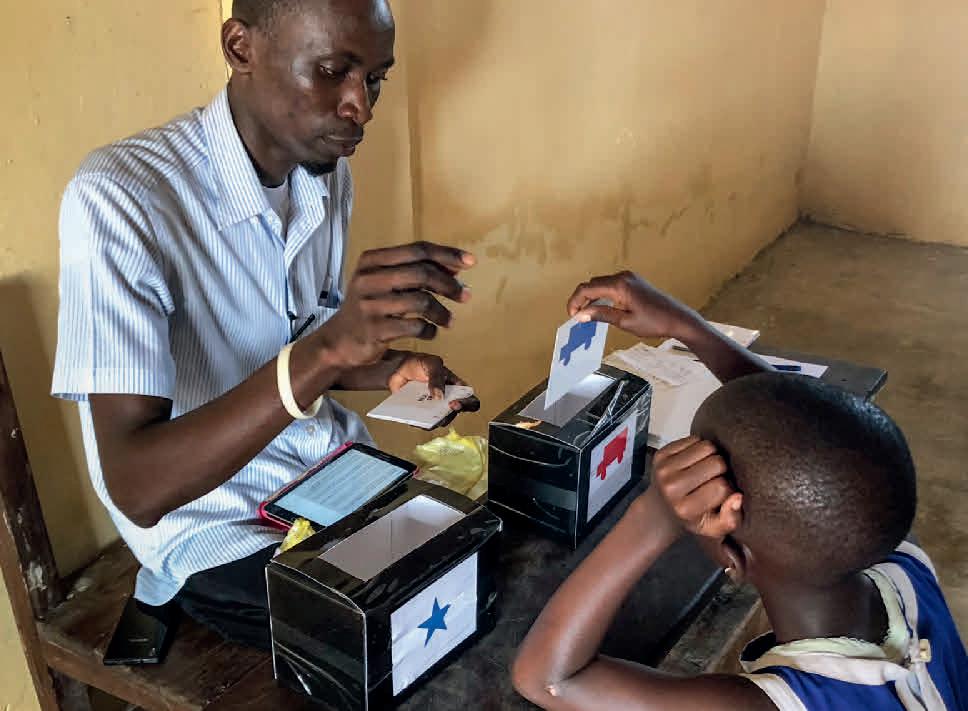

design meant children in the control group wouldn’t receive any programming during the study period, but would receive the educational programming when the study ended. But her local collaborators felt strongly that it was immoral to withhold services from children who have no other access to education and few other ways to pass the time constructively.
“So we decided to design a program that was not related to academic skills, but more to life skills, for the control group to be implemented during the study period,” said Wolf. “At the end of the study, the children who received the education program will also receive the life-skills program. We needed to design the study in a way that would keep the integrity of the intended study and be ethical and responsive to the children participating. And there are nuances I cannot understand while sitting in West Orange, New Jersey.”
That is another reason why Wolf is also passionate about making sure those studies also have coinvestigators from the areas they are researching.
“In the work I’ve been doing, especially over the last decade, I’ve been increasingly interested in making sure all of our projects have local co-investigators who are meaningfully leading parts of the work, and in mentoring and growing more researchers,” she said. “In Ghana, there are so many talented young scholars, but they don’t get opportunities to work on a lot of these large projects, and so we’ve been trying to really change that, too.”
Wolf isn’t alone. This kind of collaborative partnership—one where the professor conducts research with global partners not to them or for them—is the goal of all Penn GSE researchers.
“We’re not going to fly in, do the work, and go,” said Ruby. “We’re going to work with you. We’re going to define the problems together and construct the research together. We’re going to interpret it together. We’re going to publish it together. These are important qualities to the relationship. It’s not exploitive, it’s collegial, and that’s really important. Otherwise, you’re not going to have sustained and enduring impact, which is something that we’re interested in.”
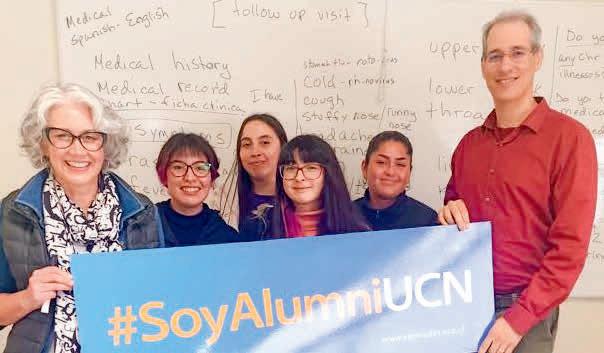
Addressing Teacher Needs in Argentina
Anne Pomerantz, a professor of practice in GSE’s Educational Linguistics division, is similarly inspired by her partners. Her most recent project was brought to her by one of them, Mariel Doyenart, director of ICANA, a binational nonprofit promoting exchange and cooperation between Argentina and the US, in collaboration with the Buenos Aires Ministry of Education. Together, the team—which also includes her GSE colleagues Catherine Box and Betty Chandy—is working on an accelerated, hybrid-online certification program for aspiring English teachers that would get high-demand language teachers into classrooms more quickly.
“The Argentina project really is about two things,” Pomerantz said. “It’s about thinking about how to do teacher education in a way that is efficient and equitable and can train a large number of teachers to meet a need for English language instruction. And it’s about what the next generation of training for English language teachers looks like in an age of AI that threatens to disrupt the kinds of language skills that will be high-value in the future.”
Another area of Pomerantz’s international research, also a partnership with Box, brought her to Chile to help university professors across disciplines—from computer engineering to forestry and medicine—teach their courses in English when they and their students are not native English speakers. This work was necessitated by the primacy of English in academic and technical publishing.
“Almost every country in the world has an economic development strategy that involves language education,” said Pomerantz. “Given the rise of English as the lingua franca of so many fields—business, technology, medical research, hospitality, higher education—that strategy often includes a strong desire for and investment in English language instruction.” Because of that, there are implications for her research beyond the countries where it is conducted.
An assessor working with a student in Ghana as part of Sharon Wolf’s research partnership there.
Anne Pomerantz (left) and her husband, Eric Cohen, C'93 (right), with attendees of her session on English for health care professionals at la Universidad Católica del Norte (UCN), in Coquimbo, Chile. Photo credit: UCN
Studying Child Development in China
The same applicability can be found in the work of Xinyin Chen, a professor in the Human Development and Quantitative Methods division who conducts research on socioemotional development in childhood and adolescence. He recently received funding from the Moh Foundation to embark on a three-year longitudinal study of the developmental outcomes for children in Anji Play, a free-play preschool model in China.
“Typically, the schools in Asia are very structured,” he said. “But the overall idea of Anji Play is to let children play freely. And so, what are they learning? Skills of social interaction, developing self-confidence, increasing their creativity? We need the data.”
Chen said that, though there has been rapid expansion of Anji Play (in China, Malaysia, Hong Kong, and even the US), there hasn’t been much empirical research assessing its outcomes. So he and his team from both Penn GSE and Shanghai Normal University aim to collect data on roughly 600 children in one branch of Anji Play in Zhejiang, China, starting this summer.
The hope is that, after following these children for three years, this research can inform refinement of Anji Play’s practices, making them more effective and adaptable to different educational contexts, and offer insights into how the model can be adapted and implemented in diverse cultural and educational settings.
Education Innovation in Beijing
Jenny Zapf, director of both Penn GSE’s Education Entrepreneurship program and the virtual certificate program in Global Education Entrepreneurship and Innovation, is also collaborating in China with partners at Beijing Normal University’s School of Future Design (SFD), which is rooted in the intersection of art, education, and technology. While the Education Entrepreneurship master’s program attracts an international cohort interested in innovating to solve critical programs in education, many others are unable—either because of time, cost, or location—to devote a year to that executiveformat program. For those learners, Zapf created the first online certificate program in global education innovation, which can take as little as three days and can be done from anywhere.
“The certificate program builds education knowledge, business and design skills, and entrepreneurial mindsets so that students are well-positioned to imagine, design, and create the future of learning,” she said.
This year, her team will deliver a certificate program to a group of teacher leaders at Beijing Normal. This will mark the first step in a new multi-national partnership that Zapf hopes will eventually include in-person seminars and workshops on each campus, as well as a possible joint degree and integrated certificate program in education entrepreneurship with SFD.

“This partnership will provide an exceptional opportunity for two leading education schools to work on pressing issues in schooling across our countries,” said Zapf.
The reason so many at Penn GSE, like Zapf, are engaged with work beyond the confines of their own country is that those pressing issues, in many cases, are universal and intertwined. Research and enterprises that are attempting to make big changes require a spectrum of stakeholders, perspectives, and experiences.
“The problems that we are trying to solve—from climate change to college access to quality pre-K—and the urgency of those issues means we need to work together,” said Zapf. “It makes us so much stronger when we’re learning from each other and building solutions together.”
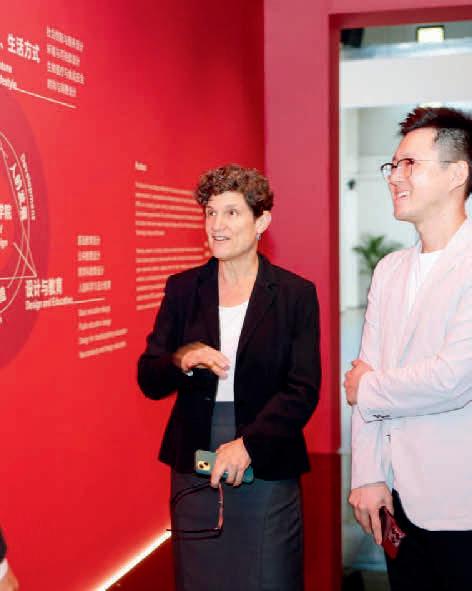

A playground at one of the Chinese Anji Play locations.
Photo credit: Anji Play
Jenny Zapf and Sam Lin, GED’20, at BNU School of Future Design in Beijing.
Empowering Literacy Education in Mexico
Gerald Campano, a professor in the Learning, Teaching, and Literacies division, certainly agrees. He and his partner, María Paula Ghiso, GRD’09, from Columbia University Teachers College, helped colleagues at the University of Guadalajara build Mexico’s first master’s program in literacy studies. That work has impact not just in the graduate students it serves, but in the exponential reach of that work.
“One of the things I think that’s powerful in Mexico is that the big public universities have oversight of a lot of the public schools, so they actually can play a big role in changing policy,” said Campano. “University of Guadalajara is charged with supporting roughly 167 high schools across the whole state of Jalisco.”
That means that the university’s investment in literacy studies reverberates down to high school students in a more immediate way.
Expanding on their partnership with the University of Guadalajara last year, Campano, Ghiso, and Professor Manuel González Canché received funding from Penn Global to launch the Penn Educational Alliance for Change and Equity (PEACE) research institute, which uses youth storytelling to understand experiences, examine social inequities, and develop plans of action to improve education prospects. They frequently travel to Mexico for seminars, research, and fieldwork alongside Penn undergraduate and graduate students.
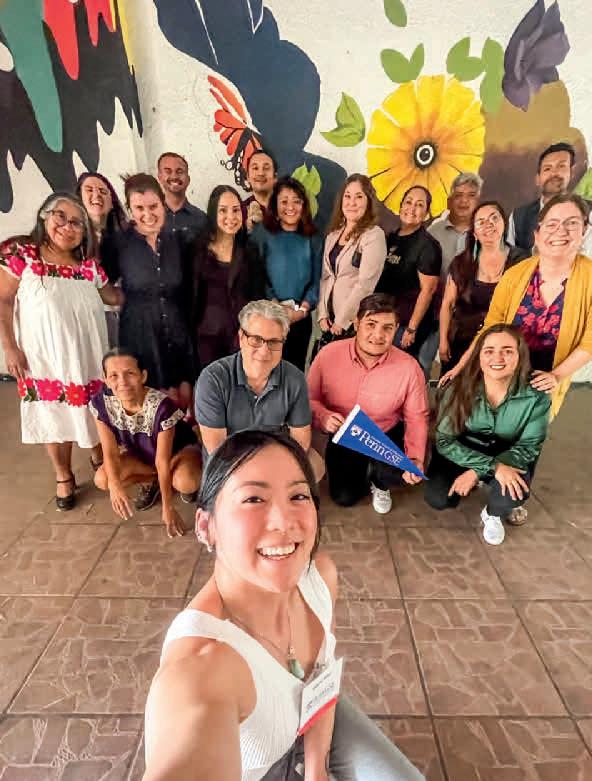
“We’re working with educators who are trying to think about how to address femicide in Mexico in the curriculum,” said Campano, explaining some of the ways storytelling is being used as a tool. “We have another teacher who is thinking about how the classroom can be more inclusive for members of Guadalajara’s Deaf community. We have another educator who’s working with internal migrants— Indigenous families who migrate within Mexico—trying to figure out how to support the education of this very transient community.”
This summer, the focus of their trip will be working with the teachers to make their work public, supporting them in writing academic articles about the work and impacting local practice and policy. Eventually, they hope to produce a book with these teacher-researchers writing different chapters in dialogue with one another.
Strengthening Higher Education Governance
Globally
Some of these international projects aren’t about a certain course of study or population of students, but about educational institutions themselves. Peter Eckel is a senior fellow in the Policy, Organizations, Leadership, and Systems division and, as an expert in higher education governance, is an in-demand consultant for university leaders and governing boards around the world.
He recently collaborated with the United Board for Christian Higher Education in Asia, an organization of 215 faith-based colleges and universities from countries such as the Philippines, Korea, Laos, and India, to enhance its governance practices and support their member institutions. He was also part of a team, alongside other Penn GSE faculty, including Professor and Board of Advisors Chair of Education Matthew Hartley, that helped to develop a new research-intensive graduate school of education at Nazarbayev University in Kazakhstan (NUGSE).
“We host NUGSE’s doctoral students for an eight-week dissertation seminar and do capacity-building work and other

advisory services for them as well—everything from curriculum to strategic planning to performance metrics,” said Eckel. “They’re going through an internal restructuring right now of their graduate programs, so we anticipate being thought partners with them as they navigate and execute that.”
These kinds of partnerships helped Eckel identify a need in the higher education market outside the US— professionalizing the administration and preparing mid-level administrators and academics for leadership roles—which he has since created a new program at Penn GSE to address. The online Global Higher Education Management (GHEM) program, launched in 2023, takes advantage of technology to gather a truly international cohort of top experts in the field to address the sector’s evolving challenges.
“We recognize that as the world invests in its university sector, it needs well-trained, knowledgeable professionals in
Faculty and students with Jalisco educators during a PEACE project convening in Guadalajara, Mexico, including Gerald Campano (center, crouching in glasses) and María Paula Ghiso, GED’09 (right, yellow sweater). | Photo credit: Claire So
key management and leadership roles,” said Eckel. “We need to be able to address those needs, leverage technology, and create the type of learning experience that will benefit individuals in their universities.”
But, he adds, that doesn’t mean he is trying to turn a global cohort of administrators into American-style deans and leaders.
“We want to make sure that we work with universities and their current and emerging leaders in ways that are going to best help the countries and context in which they’re operating,” he said. “Being able to understand the US but not see it as the only model, I think, is really important. We want to help people have the tools to have conversations within and across their local contexts. It’s a model that is built around meeting the needs of their society, informed by their local conditions and traditions, but also one with an eye to opportunities to expand and innovate.”

“Given the recent globalization of higher education, I believe the GHEM program is the most holistic and practical higher education master’s program on the market today,” said Josh Forman, GED’24, one of its first graduates. “Higher education institutions are not just competing with their neighbors today; they are competing with institutions all over the world. Understanding higher education in a global context, or simply in a context different from your own, is paramount.”

Bridging Theory and Practice Across Global Communities
Being able to see things in a new context is one of the goals of IEDP, one of Penn GSE’s intentionally international academic programs. It’s one of the reasons so much hands-on training is baked into the program. The interdisciplinary classes cover social theory, history, the field of development, and economics, but also concrete skills needed in the field, such as how to write a technical proposal or how to respond to a request for proposals.
“We partner with organizations and actually do curriculum work for them,” said Ghaffar-Kucher, director of IEDP. “So, for example, we worked with Catholic Relief Services, creating a reading club curriculum in Sierra Leone for them. We’ve worked with governments— like in the Kingdom of Bhutan, where we created a critical-thinking resource guide for teachers—and we’ve worked with UNESCO [United Nations Educational, Scientific and Cultural Organization]. . . . So, the program is a nice balance of research, theory, and practice.”
Students are expected to complete a semester-long internship at one of the 25 nongovernmental organizations the program has partnered with, from the United Nations Children’s Fund (UNICEF) to the Aga Khan Foundation. This immerses students in a real-world, para-professional experience. The hope, said Ghaffar-Kucher, is that the program is graduating students who understand different contexts, are flexible, and know how to ask good questions in service of social change through education for marginalized populations around the world.
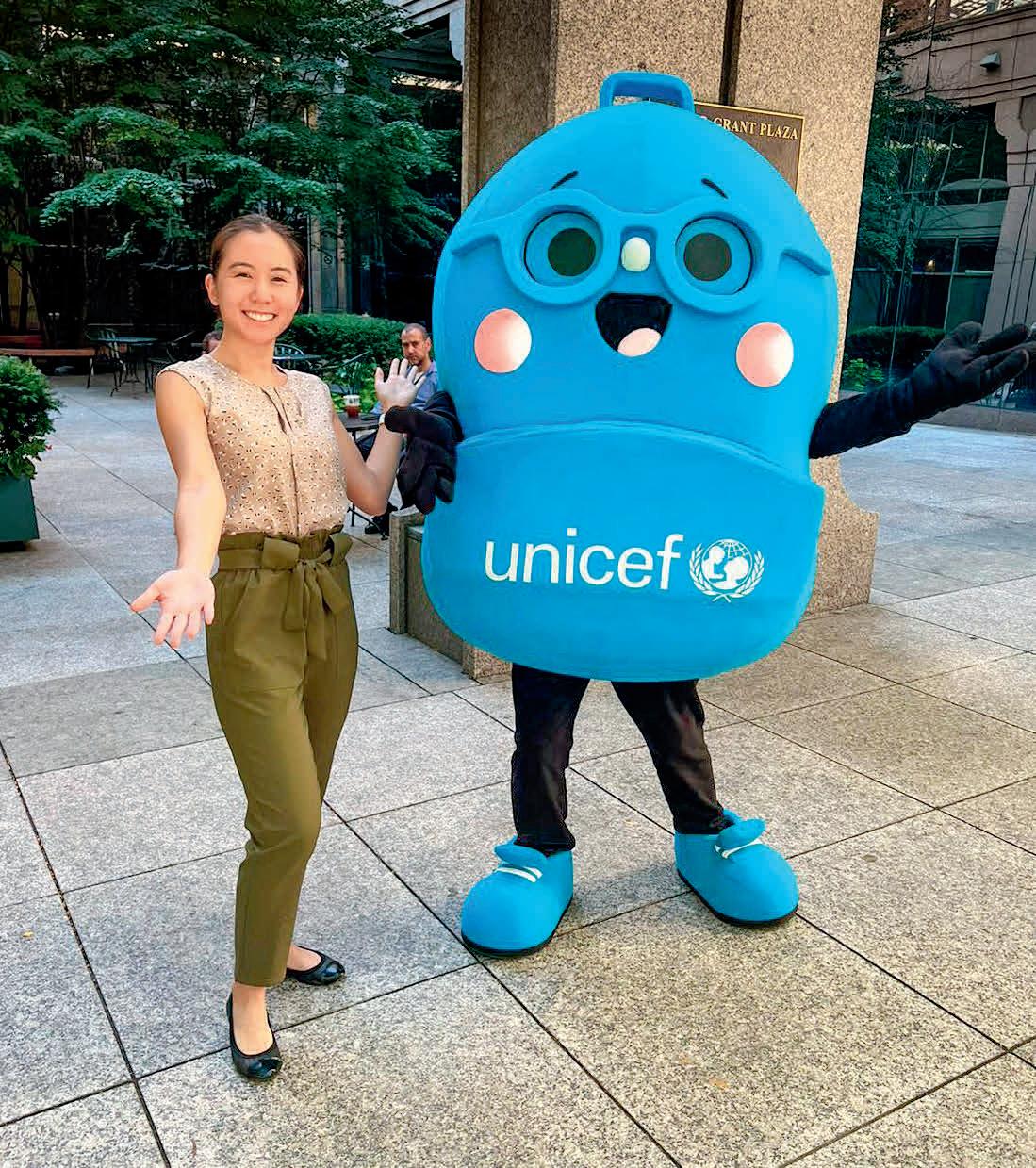
“We want our students to be good thought partners and take guidance from the people they’re working with,” she said, “so that they’re working in community.”
One of the best ways to work in community is to learn to see thing from new perspectives—something the “upside-down” map that hangs in her office constantly reminds her. Like the program, she said, that map “aims to make the familiar strange, and the strange familiar.” ■
Alan Ruby speaking at the Future of Global Education Conference at Perry World House. | Photo credit: Eddy Marenco for Penn Global
IEDP alum Amy Liang, GED’22, during her internship with the Early Childhood Education team at UNICEF Headquarters.
Community-Centered
Seeking the best way to conduct research that would support Latinx students, Professor Nelson Flores has made a career of studying bilingual education. His latest book takes an expansive view of the field.
In many ways, Professor Nelson Flores was destined to study bilingual education. The son of transplants from Puerto Rico and Ecuador, he grew up understanding Spanish but largely speaking English, even at home. While at Philadelphia’s Central High School, he was eager to improve his Spanish, but he discovered that world languages classes weren’t set up for people like him—people who could fluently understand everything the teacher was saying but needed help with so-called “productive skills,” such as speaking and writing.
As a student at Swarthmore College, he wrote a thesis on issues of language learning and bilingual education, which served him well after graduation when he became an ESL teacher, first in Philadelphia and then in the Bronx. It was in those classrooms where he began to ask the questions that would become the focus of his career as a researcher: Why are language skills of Latinx students so often classified as deficient? Why are those students sometimes categorized as “long-term English learners”? And why have the education policies that guide bilingual programs been imagined with a view to “fix” or “remediate” the problem of Latinx students’ language?

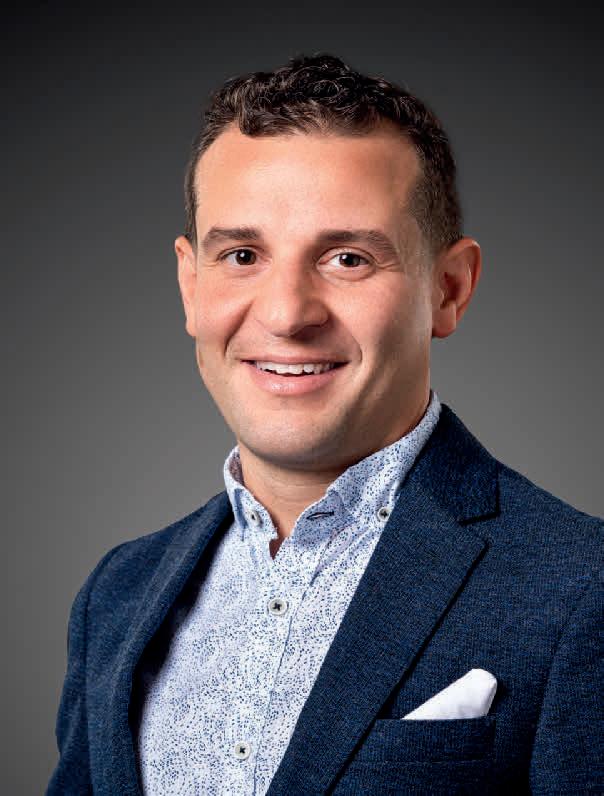
Flores explores these and other questions in Becoming the System: A Raciolinguistic Genealogy of Bilingual Education in the Post-Civil Rights Era (Oxford University Press), his latest book and the culmination of almost 20 years of work. We spoke to him about its publication, his career trajectory, and his community-engaged scholarship, all of which he began as a way to serve his Latinx community.
Your book is, in many ways, a history of bilingual education; how did you get interested in the field?
In the last chapter, I reflect on how I ended up in bilingual education, because throughout the book, I’m critical of some of the history. I was interested in supporting Latinx students, and a lot of the research was specifically focused on bilingual education. I think that was what originally moved me into bilingual education. My trajectory into it was more about supporting that community and, even though most Latinx students aren’t in bilingual education programs and most aren’t classified as English learners, that was where most of the research was—and continues to be, in many ways. One of the things I discovered in my research was that one of the reasons so much of the research on Latinx students was in bilingual education was because of a range of governmental and philanthropic funds that framed the primary challenge of Latinx communities to be language, and the solution, therefore, being bilingual education. It is the framing of the challenges as primarily linguistic as opposed to structural that made possible the deficit perspectives that I am critical of in the book.
How did you move from being a classroom teacher to becoming an academic who studies the classroom?
As an ESL teacher in the Bronx, I expected that most of my students would have been fairly recent arrivals to the country, and yet, most of the students had been born in the US. Even though all of them identified as English dominant—and some of them didn’t even identify as Spanish speakers at all—they were classified as English learners in high school. I tried to use what I had learned in my teacher education program that framed these things with a distinction between “social language” and “academic language.” Social language, according to this definition, being the language that you learn to communicate in daily interactions. Academic language being, according to this framework, the “more complex language” that you need to learn in school. That was what I was taught. My job was to “fix” the gap between the fact that they didn’t have academic language in either English or Spanish. At some point, that began to feel icky, for lack of a better word. I saw them doing really innovative, interesting, creative things, oftentimes across English and Spanish, every day. I began to think, how is it possible for
Nelson Flores Photo credit: Kyle Kielinski
students who I can see with my own eyes and hear with my own ears are bilingual, to be framed as not proficient in any language? That was what moved me into doing my doctorate, and that’s really been the core question of my research agenda since.
And that is what eventually led to Becoming the System?
Yes, but it’s taken me a long time to get there. I started my doctorate in 2007, and the book came out last year, so there were lots of steps along the way. But that is eventually what moved me to say that we have to really understand the entire history of our field as it connects to broader histories of colonialism. The core tension I was trying to grapple with—which emerged from tensions in my life—is how to work to advocate for Latinx students within a system that was built in ways that are premised on their marginalization. . . . There had been histories of the field of bilingual education before, but I call mine a “genealogy” of the field, which has different assumptions. A history is trying to describe the major events. A genealogy is interested in looking at the major discourses framing the conversation. I am looking at the history to understand what discourses were being used to frame bilingual education. It didn’t develop in a vacuum, there were broader political forces, and how does that connect to the broader histories of our country and of the world? I, then, trace those discourses and the reconfigurations from the days of colonialism to the founding of bilingual education to the more contemporary context. It’s a very different way of thinking about the history of the field.
Your community-engaged research in Norristown, Pennsylvania, involves collaborating with a collective from Centro de Cultura Arte Trabajo y Educaçion (CCATE)—including local parents and students—to identify areas of research that would help improve educational outcomes for Latinx students. How did you come to that work?
Writing the book left me feeling a bit demoralized, because its essential argument is that, as Latinx professionals became incorporated into institutions of power, we inherited the same deficit ideologies of our community and are expected to see ourselves as needing to save and fix the communities that we come from. And that was a bummer. . . . Then, I just happened to get reconnected with Holly Link, GR’16, who did her dissertation work in Norristown—I was on her dissertation committee—showing that Latinx students were really not being served in the ways that she would like them to be served. She had spent the year since her graduation working in this community organization, CCATE, to develop an infrastructure of community engagement and community research that could be used to enact change in Norristown—to make it more responsive to the needs of the community. . . . We decided to collaborate and work together. The first
year was really just getting to know the community and beginning to work through any power dynamics that exist between the university partners, which was me and my research team, and the community research partners. This year, we started piloting some tools, and we’re hoping to begin official data collection over the summer.
We
need to incorporate students’ actual bilingual practices into our programs in more flexible ways.
What specific research questions are you seeking to answer with them?
The core topic area is post-secondary readiness—Latinx youth feeling like they’re ready for life after they graduate, which can be going to college, going to a trade school, or going into the workforce.
What do you wish that the general public understood better about bilingual education?
There are so many different “publics.” I would like bilingual educators to better understand that the ideologies of bilingual education programs often mismatch students’ language practices. The assumption is that you should keep the languages strictly separated, but that isn’t how most bilingual people live. We need to incorporate students’ actual bilingual practices into our programs in more flexible ways. That’s a lot of the work that I do with teachers. I help them to think through how we can strategically cross the linguistic borders of Spanish and English, academic and non-academic, in ways that empower our students to develop voices as authors and public speakers. For the more “general public,” I think it’s important they understand what bilingual education’s goals are, which aren’t to keep students trapped in non-English language, which has oftentimes been the dominant ideology. It’s instead designed to help students become bilingual, which has all kinds of benefits—social, economic, and cultural ones. At the same time, I think it’s important to be careful in terms of how we approach opening up bilingual education to everyone. It’s great to give everyone opportunities to learn multiple languages. But the ways it has oftentimes been implemented in recent years hasn’t been with an equity focus. A lot of programs are opening in areas that are gentrifying, targeting more affluent communities and really forgetting about the more marginalized communities. I think for those who are coming from more privileged, affluent backgrounds, I would encourage them to think about how they can leverage that privilege to promote equity in these programs and to ensure that they’re not the only voices being heard. That’s what we’re trying to do in Norristown as a model of inclusion for all voices, all stakeholders to create projects together. Bilingual education is not a panacea, but it can be part of broader political struggles in support of Latinx communities.
Find Penn GSE Magazine Online! Visit publications.gse.upenn.edu
Alumni Notes
1980s
Ann Noe Dapice, NU’74, GR’80, published her book called To Thine Own Self: Values and Ethics in a Complicated World
At Penn, all alumni have an affiliation—a series of letters and numbers following their name to indicate their degree, school, and year of graduation. A master’s degree from Penn GSE is represented as GED and an education doctorate is GRD. A philosophy doctorate from any school at Penn is represented as GR. An undergraduate degree offered by the School of Education until 1961 is represented as ED. The two numbers following the letters represent the year in which that degree was completed.
1960s
Carol Serotta, CW’67, GED’68, was recently inducted into her high school’s Athletic Hall of Fame. A former recipient of the Lindback Award for Distinguished Teaching who headed the Department of Mathematics at Cabrini University for 20 years, she is now professor emerita.
1970s
Tom Bruggman, GED’78, writes that he and son, Twill, went to Belize to help the Belize Zoo. They also found time to scuba dive, zipline, swim, and visit the Mayan pyramids.
Paul Dickler, W’70, GRD’76, has been retired as an adjunct at Penn for 20 years, and at 76, still teaches summer courses at three universities. He has traveled to over 75 countries and all US states for both pleasure and consulting work.
Sandy Snitow Gorman, CW’72, GED’73, writes that although she is no longer involved in her educational consulting practice, she continues to be extremely busy with her other pursuits and interests. She and her husband moved from Stamford, CT, to Manalapan, NJ, where they currently live. She would be glad to hear from any alums who would like to say hello at COED7777@aol.com.
Alice Korngold, CW’74, GED’77, published her third book, A Better World, Inc.: Corporate Governance for an Inclusive, Sustainable, and Prosperous Future (Palgrave Macmillan).
Rick Weiner, GRD’79, retired in 2018 after a career as a school psychologist and later as a college instructor of statistics and psychology. He and his wife live in sunny West Central Florida. He writes: “Hello to the friends I made on campus in the late ’70s.”
Cindy Weill, GED’87, published the ninth book, ¡Tocamos!:Mexican Folk Art Music Makers in English and Spanish in her First Concepts in Mexican Folk Art series.
Shelley Wepner, GED’73, GRD’80 was appointed to the editorial board of the Journal of Higher Education Management for the American Association of University Administrators.
1990s
Jeffrey Berger, GR’91, retired as an emeritus professor of philosophy from Community College of Philadelphia. He chaired the department for 13 years and received both the Lindback Distinguished Teaching Award and Penn GSE’s Castetter Alumni Award of Merit.
Madeline Pinchuk Boehning, GED’98, earned a PhD in inclusive special education and works with preservice teachers on policies, practices, and pedagogy for inclusive classrooms.
Alison Cook-Sather, GR’96, is the Mary Katharine Woodworth Professor of Education at Bryn Mawr College, where she created and leads the Students as Learners and Teachers (SaLT) program. She consults at institutions around the world, supporting them in launching student-faculty pedagogical partnership programs. As a result of this work, she currently sits on the Student Engagement and Teaching and Learning Committee as an international expert for the Higher Education Authority in Ireland, which leads the strategic development of the Irish higher education and research system, and on the Fellowship Board at University College Dublin to support faculty fellows working in the “Engagement through Partnership: Students as Partners in Teaching and Learning” scheme.
Peggy Haykal, C’87, GED’92, is in her 10th year teaching water safety and swim skills to all ages and abilities. She is a Red Cross-trained instructor and certified USA Swimming coach, working with everyone from beginners to triathletes.
Lisa Herring, GED’93, is retiring after 30 years with Pittsburgh Public Schools, primarily as a K–5 ESL teacher.
Kathleen Murphey, C'87, G'91, GED’92, GR'06, is an associate professor of English
and humanities at Community College of Philadelphia. Her collection Rainbow Tales, featuring feminist retellings of fairytales with LGBTQ+ characters— including “Beau and the Beast” and “The Frog and the Transgender Prince”— was published by JMS Books. Other stories have appeared in Gramarye and Pennsylvania Literary Journal.
Brian Niles, GED’96, founded TargetX, a leading higher education customer relationship management (CRM) company, after graduation and sold it in 2020. He now runs House Cup Coffee Roasters in Havertown, PA, which he started in 2018.
Jennifer Park, GED’98, co-published an article on her experiential counseling technique in the Journal of Creativity in Mental Health. She has co-authored textbook chapters on cross-cultural communication, single parenting, and professional orientation and ethics. She has served on the Executive Council of the Pennsylvania Counseling Association and is the CFA mentorship program chair for the Chapter Faculty Advisor Committee of Chi Sigma Iota Counseling Academic and Professional Honor Society International.
Pamela Pope, GED’93, recently finished her 30th year teaching middle school at Heathwood Hall.
Scott Riotto, C’90, GED’91, has taught high school history in Morris County, NJ, for 34 years, including honors US history and AP US government. He also taught community college for 20 years and earned an MA in American history from Rutgers University-Newark.
William Smith III, GED’91, GR’94, is retired from his role as senior regulatory affairs manager at InSite Vision Inc. (now part of Sun Pharmaceuticals). He volunteers weekly as a literacy coach, substitute teaches, is part of a creative writing group, and is active in the LDS Church.
2000s
Annette Campbell Anderson, GED’97, GR’06, deputy director of the Center for Safe and Healthy Schools at Johns Hopkins University, has been named a 2025 Provost’s Fellow for Public Engagement. She is one of 16 faculty members selected for the inaugural cohort, which will receive yearlong training to expand the public impact of their research.
Katherine Carella, GED’05, is editorial director at Scholastic for the Acorn and Branches book lines for K–3 readers.
& Denotes alumni authors whose latest book is featured on the alumni bookshelf on p. 33.
She is a former first-through-thirdgrade teacher, and her Penn experience continues to inform her work in children’s publishing.
Sandra Dean, W’59, GRD’06, founded SUM (See and Understand Math) to provide trained math tutors using a multisensory, sequential approach for struggling students in grades 1–3 in underserved schools.
Pamela Felder-Small, GRD’05, facilitated a panel at the fourth session of the UN Permanent Forum on People of African Descent titled “Sankofa: Reflections of Ten Years of Black Doctorates Matter and Our Work Towards Human Rights.”
Alex Joujan, GED’06, a mathematics teacher at the Pingry School, completed a five-year project in January 2025, publishing Advanced Algebra and Trigonometry, a six-volume, 930-page textbook series in a guided discovery format. Since 2020, he has released three textbooks in the Summit Math series to support collaborative, paced learning. Learn more at summitmath.com.
Esther Kim, GED’05, was recently promoted to associate professor of education at the University of Southern California.
Megan Langman, GED’06, was recently appointed supervisor of curriculum and instruction for the Cherry Hill School District in New Jersey, overseeing K–12 English language arts and world language after 16 years teaching and two years as an instructional coach.
Rebecca Markham, GED’05, lives in Allentown, PA, and teaches US history and global history at Northampton Area High School.
Tyrone McCombs, GR’03, celebrated his daughter’s Penn GSE graduation in May. He is entering his 35th year in higher education as a professor and executive director at Rowan University’s College of Education.
Natasha Murray, GRD’05, was recently elected as the chair of the board of directors for the National Network of State Teachers of the Year.
Joe Petrosino, GRD’07, writes that he “is making waves in Chester, PA, as he molds the minds of future superintendents and school principals, equipping them with the skills and knowledge to lead schools and districts to new heights!” He has mentored over 1,000 students who’ve gone on to careers in medicine, journalism, and the military. He’s currently writing a book on humor in education and is available for interim and advisory roles in special education, career and technical education, and educational leadership.
Anabel Sanford, GED’06, was recently elected to the boards of the Minnesota Solar Energy Industries Association and the Minnesota Ground Water Association Foundation. A consultant at Emmons and Olivier Resources, she works on a
Department of Energy-funded project siting solar energy systems to address nitrate contamination in rural drinking water.
Tacksoo Shin, GED’01, is a professor at Myongji University.
Dena Haritos Tsamitis, GRD’09, director of Carnegie Mellon University’s (CMU) Information Networking Institute, is celebrating 25 years of leadership in engineering education. She recently received CMU’s Robert E. Doherty Award and will be honored with a 2025 Gabby Award for her impact in expanding access to cybersecurity education.
2010s
Alejandra Abusada, GED’19, is director of development at the largest community college in the US—Miami Dade College— where she secures major gifts to fund life-changing scholarships and help close educational equity gaps.
Paul Barker, GRD’11, is retired and volunteers as a school docent at the National Gallery of Art in Washington, DC.
Daniel Bergman, GED’13, is celebrating five years as senior director of Pratt Institute’s Center for Art, Design, and Community Engagement, K–12, which serves over 2,000 New York City youth annually with transformative art and design education.
Stephen Bournes, GRD’17, was appointed superintendent of the School City of East Chicago in Indiana last July.
Carlo Cinaglia, GED’16, is completing his dissertation in second language studies at Michigan State University and will join Florida State University’s School of Teacher Education in August 2025 as assistant professor of second language education.
Rita DiBenedetto, GED’19, teaches high school English language arts (ELA) and serves as assistant principal of student affairs at Archbishop Ryan High School in Philadelphia. Previously ELA Department Chair, she helped relaunch the school’s digital newspaper and now oversees student clubs and activities.
Jessie Rui Du, GED’11, is an assistant professor of marketing at University of North Carolina Greensboro. She earned her PhD in business administration from Baruch College (CUNY) in 2023. She and her husband, Qiwei Shi, GEN’10, GR’12, married at Houston Hall in 2012.
Eddie Gallagher III, GRD’17, is wrapping up a five-month term as co-interim head of school at Wilmington Friends, stepping in to support while the head of school was on sabbatical.
Irene Greaves, GED’15, released a TEDx talk on Lovescaping, a philosophy and practice that she describes as “my life’s work, which I first conceptualized as a student at Penn in 2015.” Centered on embodying love as an action through 15 essential pillars, her work promotes connection and humanity. Watch at lovescaping.org.
Mark Harris, GED’15, earned his MBA from Johns Hopkins University in 2024 and now leads insights for Quaker’s ready-to-eat cereal and granola brands at PepsiCo.
April Herring, GRD’13, recently gave a TEDx talk, opened a photography exhibit, and is now offering life coaching and somatic healing alongside her work as an administrator at Carroll Community College.
Stephan Heuer, GED’13, is celebrating 10 years at Frankford Friends School, where he now serves as assistant head of school for teaching and learning. He was previously director of student life and a third grade teacher at the school and credits Penn’s Teaching, Learning, and Leadership program and faculty mentors for shaping his leadership in problembased learning. He writes: “I gained valuable insights into teaching practices and leadership skills that I use every day. I am especially grateful to professors Yasmin Kafai, Richard Ingersoll, and James Lytle for their support and guidance, which prepared me well for this role.”
Melanie Hoffmann, GED’18, is executive director of development and alumni relations at St. Albans School. She recently enjoyed a mini-reunion with fellow Penn GSE DC-area classmates Ryann Berry, GED’18, Ryann Fapohunda, GED’18, and Jeremy Hark, GED’18
Brittany Jemielita, GED’15, earned a doctorate in adult education and a postmaster’s in educational leadership. She co-founded Insights, LLC, an education technology company developing AIpowered tools for schools, and lives in Philadelphia with her husband and their two children.
&
Michael Kokozos, GR’17, LPS’23, recently released Teaching Storytelling in Classrooms and Communities, a book offering educators practical strategies to use storytelling as a tool for student empowerment, empathy, and social change.
Robert LeBlanc, GR’16, associate professor at the University of Lethbridge, is the winner of the 2024 Alberta Teachers’ Association Educational Research Award, given annually to an Alberta academic who conducts high-quality research on classroom teaching and learning.
Xinyi Liang, GED’18, has spent six years supporting student life as assistant to the associate vice president (student affairs), overseeing seven residential colleges at the Chinese University of Hong Kong,
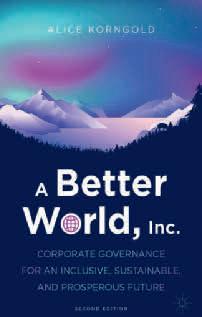
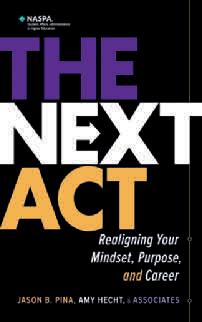
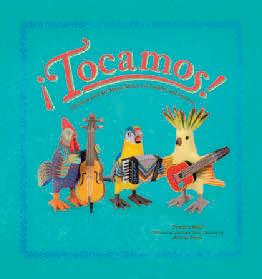
Spring/Summer 2025 Alumni Bookshelf
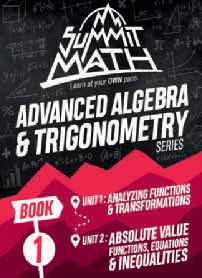
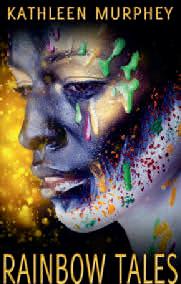
& Shenzhen. She will soon transition to a new role as assistant to the associate vice president (academic).
Diane Luckman, GED’11, returned to the classroom to teach a fourth/fifth grade vertical class at the Philadelphia School— where her daughter also teaches. She writes: “What an honor to see my daughter in action!”
Amy Hecht Macchio, GED’03, GRD’12, co-edited The Next Act: Realigning Your Mindset, Purpose, and Career (NASPA, 2024), a guide for student affairs professionals navigating career transitions and aligning purpose with evolving roles in higher education.
Rina Madhani, GED’19, was recently named to Crain’s 40 Under 40 list in honor of her work founding Start Lighthouse.
Angel Mills, GED’16, was selected for the Change Collective’s Spring 2025 Cohort, representing Detroit in the national leadership network. As a part of the cohort, she will design a civic action plan tailored to the needs of her community and collaborate with changemakers to strengthen civic life and community connection.
Samantha Neugebauer, GED’11, a lecturer at NYU in Washington, DC, was selected as a 2025 Summer Writing Fellow at Hawthornden Castle in Scotland, where she plans to finish her novel.
Payal Patel, GED’14, is the founder of Learning In Stillness, a personalized tutoring business. She recently published a book chapter on meditation in math education in Disrupting Secondary STEM Education (Routledge Taylor and Francis Group). This publication is an extension of the teacher research she began for her Penn GSE master’s thesis.
Jessica Pavelka, GED’14, is pursuing a PhD in educational psychology at the Philadelphia College of Osteopathic Medicine, specializing in cognitive
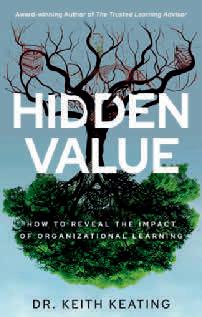
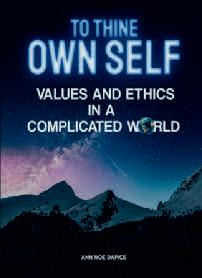
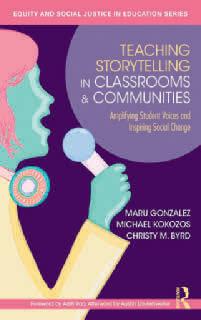
behavioral therapy. Her dissertation explores the use of biofeedback in treating anxiety disorders.
Adam Payne, GRD’18, was selected as the inaugural faculty fellow for Wentworth Institute of Technology’s Honors Program for 2024–2025. He will help build the program from the ground up and continue in the role in the next academic year.
Kristi Pintar, GRD’12, was elected to a three-year term on the Commission on Accreditation of Healthcare Management Education (CAHME) Accreditation Council, the only Council for Higher Education Accreditation (CHEA)-recognized body accrediting graduate programs in healthcare management.
Hang Qin, GED’18, is an edtech entrepreneur and youth advocate advancing equity through Banbuniuniu, an AI-powered self-learning platform for elementary math that’s based on Singapore’s concrete-pictorial-abstract (CPA) pedagogy and is adapted for China’s curriculum. Accessible by iOS, Android, PC, and WeChat, the platform has provided free access to many low-income families from underserved communities. Despite sector-wide policy changes, Banbuniuniu remains officially approved by China’s Ministry of Education to continue operations.
Callista Regis, GED’17, completed her PhD in education at the University of Cambridge in the UK.
Jonathan Roberts, GED’13, leads the middle school at Colegio Bolívar in Cali, Colombia, where he is focused on building a strong, inclusive school culture and supporting students and teachers in their growth. He recently presented on equity-minded data at the Bolívar Forum and spoke at the AMISA Educators’ Conference in Panama. He’s now preparing for his next global leadership role.
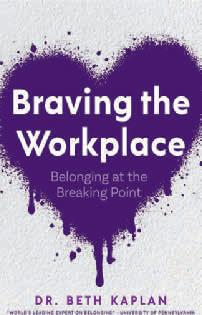
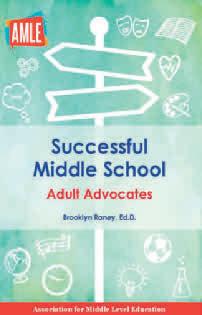


Stephen Sacchetti, GED’15, recently published his second puzzle book, More Puzzler’s Puzzlers, and continues exploring how puzzles can foster collaboration and persistence in classrooms.
Julia Snowfrock, GED’18, has been appointed director of teaching and learning at Spartanburg Day School.
John Spencer, GRD’19, was promoted to deputy chief of school climate and culture for the School District of Philadelphia.
Daphne Valcin, GED’10, recently renewed her Master Certified Coach (MCC) designation—held by just 4 percent of International Coaching Federation (ICF)-certified coaches globally. She has delivered nearly 4,000 hours of coaching and leadership development to over 400 individuals and 200 organizations across four countries.
Xinyan Zheng, GED’09, recently published Dachen Island: The Path to Common Prosperity through Reclamation, a picture book showcasing the island’s 60-year journey toward sustainable development. Zheng highlights ecological revitalization, wind-energy initiatives, and the community’s pursuit of shared prosperity. The book captures landmarks like the Reclamation Monument and the resilience of local fisheries, offering readers an inspiring lens into balancing modernization with cultural heritage.
2020s
Gregory Blake, W’76, GED’22, is nearing completion of his licensed professional counselor (LPC) hours and currently sees 30 clients, ranging in age from 16 to 77. He works at a growing practice and values being part of a collegial, experienced team.
Tara Bryant-Gray, GED’20, LPS’23, is joining the next cohort of Moravian
The new office in Catalyst @ Penn GSE brings together under one umbrella two of the School’s existing offices dedicated to professional development: the Penn Literacy Network (PLN) and the Center for Professional Learning (CPL). As the Penn Learning Network, it will continue the signature literacy-focused offerings of PLN, along with CPL’s expansive portfolio of professional learning programs that span coaching, leadership development, and applied practice across K–12, higher education, and beyond.
Registration for the fall is open for these certificate programs and more:
• Executive Coaching
• Introduction to Teaching with AI
• Science Conservation and Literacy
• Universal Design for Learning
Learn more: pln.gse.upenn.edu
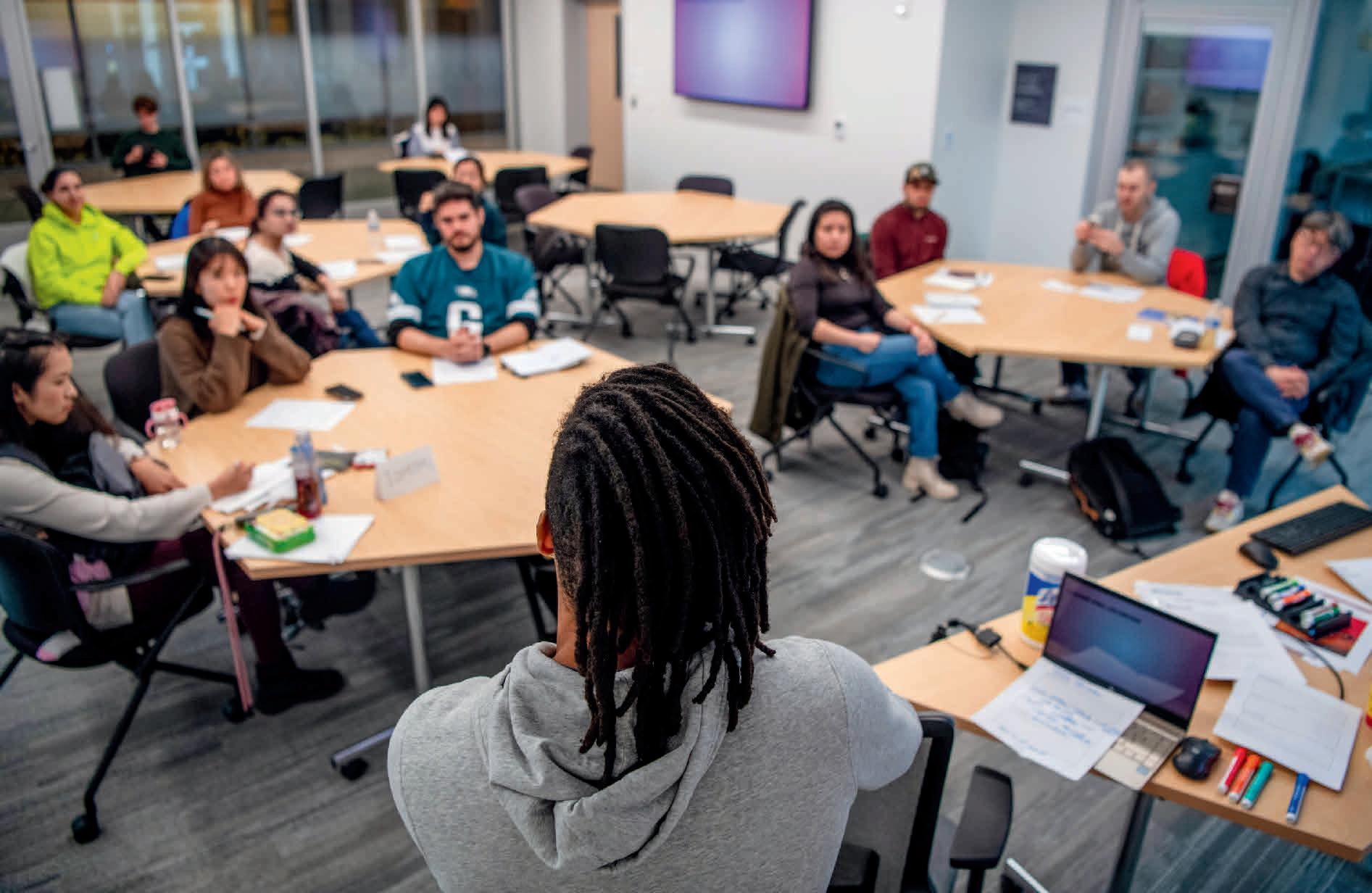
University’s EdD program in transformational leadership, aiming to advance her work in schools and her therapy practice through a changemaker lens.
Alan Chen, GRD’22, has been appointed assistant dean of global programs at the Cheung Kong Graduate School of Business (CKGSB), where he leads English-language executive education. CKGSB is China’s first privately funded, research-driven business school.
Stacy Delapenha, GED’22, WG’22, is vice president of apprenticeship and employer engagement at Strada Education Foundation and is committed to building equitable processes to develop talent from the classroom to the boardroom.
Vanna Hing, GED’21, is a program coordinator at Penn Neurology, supporting residents’ and medical students’ educational and academic credentials during training. She received Penn’s 2022 Models of Excellence – Individual Award, and recently relocated to Marlton, NJ. She writes: “I often reflect on my time at Penn GSE, and I’m incredibly grateful for the experiences and connections, especially within Cohort 7. It truly helped shape my career path.”
John Ilagan, GED’24, is now medical director of both the postpartum and antepartum units at Sloane Hospital for Women, Columbia University Irving Medical Center. He also directs subinternships and OB/GYN electives for fourth-year medical students, while continuing his work in interprofessional education and clinical training.
Gemelle John, GED’24, is executive director Horizons Tower Hill, the first school in Delaware serving as a Horizons affiliate. Horizons is a tuition-free national network of community-centered programs that support youth in building social-emotional and academic skills through experiential, project-based learning opportunities, confidence building activities, and whole-child teaching practices.
Kerry Jones, GRD’23, joined the University of Bridgeport in fall 2024 as assistant professor of educational leadership. She teaches in the Sixth Year Advanced Studies Program, preparing future school and district leaders, after retiring from a 31-year career in Connecticut public schools.
Beth Kaplan, GED'20, GRD’21, shares her expertise on belonging in the workplace—the subject of her Penn GSE
dissertation—in her new book, Braving the Workplace: Belonging at the Breaking Point (Mango).
Keith Keating, GRD’22, will release his second book, Hidden Value: How to Reveal the Impact of Organizational Learning, in June. A follow-up to his award-winning debut, it offers strategies and insights to help learning leaders demonstrate the value of their work.
Ryan Kimmet, GRD’21, is returning to his alma mater, the Harley School in Rochester, NY, 30 years after graduating, as the next head of school.
Rob Kuchar, GED’21, is joining the history department at Princeton Day School after 10 years teaching history and economics at Rutgers Prep, where he built a 12-terminal Bloomberg Lab to teach finance and economics.
Gulnur Kukenova, GED’20, serves as the assistant director of grants at Harcum College, where she helps secure funding for student support and institutional initiatives. Beyond her work in grant writing, she is actively involved in organizing impactful events, including a scholarship recipients meeting and a golf outing fundraiser. Her commitment to student success extends to supporting Harcum’s Collegiate Recovery
Program, funded by the Independence Blue Cross Foundation, which enhances drug and alcohol education on campus.
Jesse Mazur, GRD’21, serves as executive director of alternative programs, student accountability, and special projects for Roanoke City Public Schools. He leads key initiatives supporting students in alternative settings and aligns his work with the district’s “Destination 2030” strategic goals.
Melissa Molina, GED’24, completed her first year as principal at Esperanza, leading initiatives to boost engagement, academic support, and family partnerships. She expanded the ninth-grade academy and launched career-focused experiences. A recent Surge Fellow, she’ll join DiverseForce on Boards this fall to further her advocacy for educational equity.
Sydney Osifeso, GED’20, was recently appointed interim associate dean of administration and operations in residential education at Stanford University, where she oversees strategy, communications, finance, and HR to support integrated student life and learning.
Brooklyn Raney, GED’23, GRD’24, has published Successful Middle School: Adult Advocates, based on her Penn research. Part of the Association of Middle Level Educators series, the book offers strategies and stories on how adults can support students’ academic and personal growth through meaningful advocacy.
Sarah Sidoti, GED’20, earned her master’s of social service from Bryn Mawr College in May 2025 and is now beginning her career as a psychotherapist.
Jordan Tegtmeyer, GED’08, GRD’21, was promoted to senior associate dean for finance and administration in Princeton University’s Office of the Dean of the Faculty in February.
Anita Ntem Thomas, GED’22, was recently appointed chief of staff at Democracy Prep Public Schools, where she has grown from student to senior leader. She has led
Share
Fill out our Alumni Notes form at penng.se/alumni to tell us your updates and news. Proud of a Penn GSE friend or colleague? Let us know here!
strategic initiatives while championing equity and student success. She also serves on Bryn Mawr College’s Board of Trustees and is a finalist for the Cambiar Catalyst Fellowship.
Sierra Vogel, GED’22, writes: “Penn shaped my abilities as not only an educator but a leader. UTAP’s [Urban Teaching Apprenticeship Program] intensity challenged me to think critically, create professional and personal boundaries, and lead by example. In less than one year, I received a leadership role at my company and believe my graduate program experience prepared me for that.
Now, I work in a primary school teaching students social-emotional skills and support their behavioral and emotional health needs. I adore my job and know that Penn laid my foundation to get me where I am today.”
Hannah Yoon, GED’22, has spent the past three years in Chicago Public Schools as a high school English teacher. She also directs three after-school theater productions and organizes a field trip to London for her drama students.
Submissions have been edited due to space constraints and magazine style guidelines.
Though you may have only been a Penn GSE student for a short time, you will be an alum forever! Alumni engagement is critical to the vitality of our 20,000-person (and growing) community. To help us keep you up to date with news, events, and other alumni benefits and opportunities, please make sure we have your current contact information.
As a Penn GSE alum, there are many resources available to you, including:
A Penn Alumni Card, which offers free access to Penn Libraries, Morris Arboretum, the Penn Museum, and more
Career and professional development opportunities from networking events to special webinars
Lifelong learning opportunities on campus and across the globe
Tips from the Educator's Playbook
A FIVE-POINT FRAMEWORK for Regulating Emotion During Challenging Discussions
When faced with uncomfortable or hostile situations, the flight-or-flight instinct often takes over. But there’s another option. Penn GSE Professor Howard Stevenson, the Constance Clayton Professor of Urban Education, believes managing stress and regulating emotions is achievable through mindfulness and intentional practice.
Stevenson, an expert on racial literacy, trauma, and stress management, developed a framework called CLCBE—short for “calculating, locating, communicating, breathing, and exhaling”—to help individuals, especially young people, cope with racial insults and threatening language while managing stress in divisive debates or tense situations.

“We teach folks how to notice if they are struggling in conversations, when they’re worried and anticipating what could go wrong, and how to prepare for that with mindfulness approaches,” explained Stevenson, who heads Penn GSE’s Resilience Empowerment Collaborative and is the author of Promoting Racial Literacy in Schools: Differences That Make a Difference (Teachers College Press).
CLCBE benefits educators, administrators, and students, and Stevenson has shared the practice with students as young as third graders. Educators everywhere can use these types of supportive tools. “Now is exactly the time to use these skills,” he said.
According to Stevenson, the key to success is practice—ensuring these skills are ready when needed. He shares these insights on how to apply CLCBE’s steps and help navigate challenging discussions.
1.
Calculate
Before you react, Stevenson suggests taking stock of your emotional state. Notice your feelings and their intensity, then assign a value. If you’re stressed, rank the feeling on a scale of one to ten. Conversely, if you’re hopeful or relaxed, what’s that number?
1 2 3 4 5 6 7 8 9 10
Locate
Stress usually settles somewhere in our bodies, so determine where you hold tension. That could be a pain in your shoulders, a stiff jaw, or a clenched fist. Try to get as specific as possible.
Howard Stevenson Constance Clayton Professor of Urban Education

3. Communicate
Communication is a two-step process: selfimagery and self-talk. In both ways, people guide themselves through tense situations. Self-imagery refers to images that come to mind when we flashback to past situations, while self-talk is the conversations you have internally during a problematic interaction. Notice how you react during and after these experiences.
Breathe and Exhale
Modulating your breath calms the nervous system and helps regulate your mental and physical state. Practice breathing in for six seconds, holding your breath for four seconds, and slowly releasing the breath. The exhale should be longer than your inhale.
Practicing the Practice
Stevenson concluded that if you’ve resolved the tension in your body and internal reactions, you’re better equipped to respond thoughtfully and, if you choose, to use your voice.
“We’re taught to avoid difficult conversations, and we’re so good at it that we need to unteach ourselves,” he said. “Whether it is hate-based bullying or math anxiety, we can use CLCBE to prevent the drain and self-doubt from mismanaging resolvable conflicts.” 5.
Looking for MORE ADVICE from experts?
These tips are adapted from the Educator's Playbook, a Penn GSE newsletter that distills faculty research into useful advice for educators and parents. Visit penng.se/playbook to sign up!
“Through my training at Penn GSE, I learned sustainable practices as a teacher and was encouraged to be creative and incorporate my own passions into my craft. I am tremendously grateful to have received an education that I can apply to my job every day. Supporting the Penn GSE Annual Fund helps ensure that current Penn GSE students, and our future educators, are best prepared to have an impactful and fulfilling career in education.”
-David Lepelstat,
GED’23
MAKE YOUR GIFT TODAY www.gse.upenn.edu/giving
